PinotFile: 9.21 March 23, 2013
|
Along the Pinot TrailI hit the road in February for the first time in 2013, determined to see what the 2010 and 2011 vintages have delivered for California, and what is in store for the 2012 wines still in barrel. I spent a week in the Russian River Valley, Sonoma and Carneros, and several days in the Central Coast region of the Santa Maria Valley which included my annual visit to the World of Pinot Noir (WOPN) event. The weather was dead gorgeous for both trips, so I was able to travel topless some of the time. The Central Coast and WOPN report will follow in an upcoming issue.
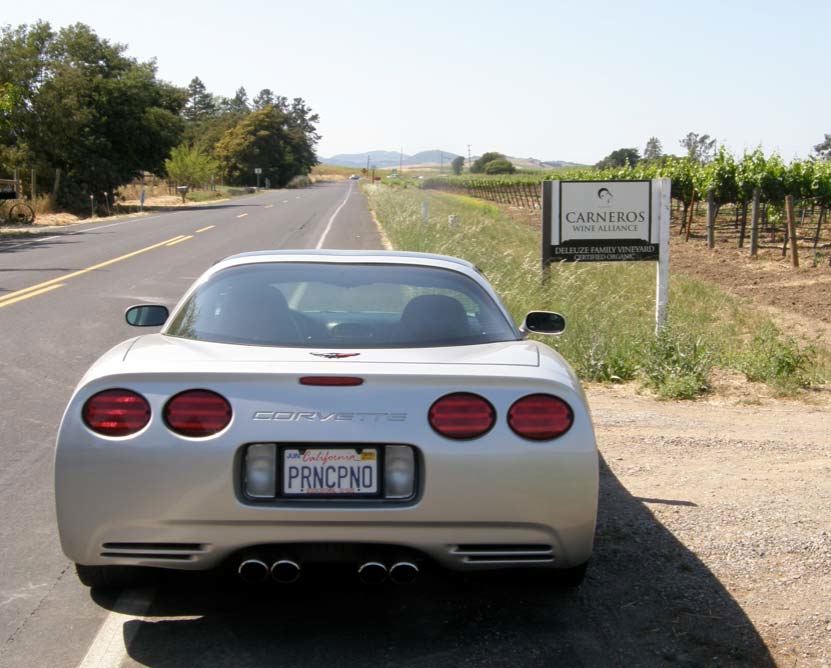 You can read all you want about wine, but you need to visit the vineyards, kick some dirt, and b.s. with the winemakers and growers to get the real lowdown. I often return to this quote from Tim Atkin MW. “I believe that the place where a wine was made, not to mention the character, ambition and talent of the person who made it, is highly relevant to how that wine tastes. I want to know about these things, just as I want to know about vintage conditions, personal eccentricities and a winemaker’s take on the world. All these things make wine different: all these things make wine special.” A good pimp of Pinot Noir needs to know the talent out there. If you want to talk vintages with a winemaker, there is no better person than Adam Lee to corral, the proprietor and winemaker at Siduri Wines and Novy Family Wines. He crafts many wines from an assortment of vineyards that stretch from the Willamette Valley in Oregon to the Sta. Rita Hills in the southern Central Coast of California. I have invoked some of his comments in my summaries below. 2012 was an ideal growing season in California with moderate weather and resulting generous yields of grapes with nicely balanced chemistries. It was the rare vintage that offered both quantity and quality. The total crush was 4.4 million tons according to the California Department of Food & Agriculture, 1% higher than the previous record set in 2005. California’s Pinot Noir crop was 247,000 tons, up 45% from 2011 according to Ciatti Co., who noted, “Yields per ton for Pinot Noir in many areas were at a level never thought possible.” Pinot Noir crops were up 85% year-over-year for Monterey and Sonoma Counties. Some wine sages have already anointed it a “Marilyn Monroe vintage,” and the “Best California Vintage Ever,” while others have used words like “epic,” “ideal,” and “exceptional” to describe it, but it is way too early to tell. Many of the barreled wines had not finished malolactic fermentation when I visited due to the coolness of the past winter. From the barrel samples I did try, it looks to be at least a very good vintage and this was Adam’s impression as well. The weather was also consistent and warm in Oregon leading to an early, abundant harvest 2011 was the coolest vintage that Lee has experienced since he started making wine in 1994. Cold weather and frost during flowering several limited yields in many northern and northerly central coast regions. In the Santa Cruz Mountains, for example, yields were reduced in many vineyards to 25% to 50% of normal. 2010 was actually cooler if the two heat spikes that occurred in the North Bay on August 23 and September 23 are excluded. These two significant heat spikes pushed sugars higher. 2011 had essentially no summer and no heat spikes, but late season rain was a major factor in the North Bay. Rain started in the North Bay on October 3 and lasted for four days and a second, unexpected storm, struck on October 10. The two storms soaked many North Bay vineyards. One of Lee’s vineyards on the Sonoma Coast had almost 6.5 inches of rain over this period. To the south of the Santa Cruz Mountains there was considerably less rain, and the Santa Lucia Highlands was spared the second storm. The Sta. Rita Hills was minimally affected. After October 10 in the North Bay, there was grape dilution, little sugar increase and rot pressure. Essentially nothing good happened after the rains. Grapes that were brought in before the rains were pretty good. As Lee noted, “In the North Bay, there were three broad categories of harvest timing in 2011: before the rain, after the rain, and before the rain but only because it is going to rain.” Pinot Noir was harvested in all three categories.” Lee also observed during blending that grapes from the many areas in California performed differently in disparate sections of vineyards. “Sections seemed to perform either extremely well or extremely poorly with no in-between.” For example, several clones from Keefer Ranch had to be declassified, and a clone 115 block produced no usable grapes from Rosella’s Vineyard. As far as Oregon in 2011, Lee said, “Oregon sucked.” He was picking Pinot Noir in November at 19º Brix because the weather was even colder than California, and was unable to bottle any single vineyard Pinot Noirs from Oregon. His dim outlook is not shared by all Oregon winemakers. Brian Marcy, winemaker at Big Table Farm in the Willamette Valley told me the following. “2011 was even cooler to begin with, but the warm and driest September in memory saved the vintage. The total degree growing days were almost identical to 2010, and the juice chemistries were proof of this: in some cases the two years were almost identical. The skins matured during the warm September, but the seeds and pulp lagged behind with the large clusters and berries contributing to the disparity in skin and seed ripening. I remember as I walked through the vineyards as harvest approached that the juice I spit was very dark and this is apparent in the wines, too. Early October rains increased the botrytis pressure, but most of our fruit was clean and picked by Halloween. We are really happy with our 2011s. They are taking a little longer to fatten up than the 2010s, but I don’t think this is a bad thing. They are more effusive aromatically, slightly more tannic, but with similar acidity and more concentration than the 2010s.” Like any vintage, talented producers manage to produce some superb wines despite difficult growing conditions. Those vintners who crafted quality wines in 2010 and 2011 had to spend an inordinate amount of time and effort in the vineyards. I was told this repeatedly as I visited with winemakers recently. Winemaker Paul Lato likened it to “babysitting a classroom of unruly children who needed constant attention and discipline.” Remember that it is not the year, but the wine in the glass that determines your pleasure. That said, there are more lighter weight, lower alcohol, less layered and fewer appealing Pinot Noirs from the 2011 vintage, even among top vintners, than I have ever experienced in California and Oregon in vintages of recent memory. You won’t find many large breasted Pinots with a big behind. The wines are more Audrey Hepburn than Pamela Anderson. Winegrower Anne Moller-Racke of The Donum Estate made an important point. “The 2011 wines may need more time to come into balance the way the vintage needed more time, albeit the ripening curve was certainly off. Because of the challenges in 2011, yields were markedly reduced and this is probably good. Be wary of the inexpensive Pinot Noir wines from negociant producers whose blends are often composed of declassified wine. In 2011, this wine was generally mediocre to crappy in quality. 2010 was a very formidable vintage. In Northern California, low spring temperatures and an April frost in some regions delayed bud break, damaged vines and fostered mildew (see left photo of frost damage). The summer remained very cool, even downright cold, exhibiting the second lowest temperatures in Napa and Sonoma counties in 50 years. The result was delayed vine growth and the spawning of bunch rot. A late August to mid- September heat wave, with temperatures soaring over 100ºF, caused sunburn scald on grapes. White grape varieties such as Chardonnay are more susceptible to sunburn than purple varieties like Pinot Noir (see right photo of sunburned Chardonnay grapes). Rain at harvest created mold that severely damaged some vineyards, especially those planted to Chardonnay. The result was a very late and shortened harvest with reduced yields. Sugars were generally reduced resulting in lower alcohol levels and some spotty wine quality.
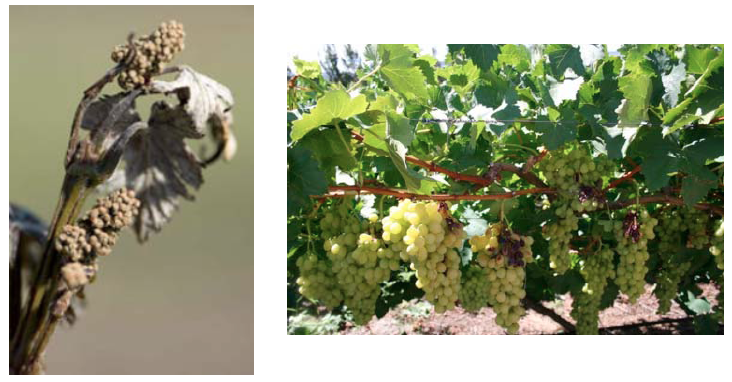 The Central Coast had an extended growing season as well in 2010 and yields were also reduced. The marine influence tempered the August heat spike in the Santa Maria Valley and Sta. Rita Hills, but the October rains were unwelcome challenges. For Oregon, a wet spring and cool summer delayed ripening by two to three weeks. The later days of the growing season saw slightly cooler than normal temperatures with few heat spikes. The late harvest was devastated in many vineyards by voracious feasting birds, but the quality of the harvested fruit was generally excellent and I have favorably reviewed many wines from the 2010 vintage in Oregon. Brian said, “2010 was cool but even, the berries matured uniformly and the clusters were normal to small size. Although we did have some rain, botrytis pressure was not too high. Grapes were picked at the end of October. The resulting wines are pleasant and tend to have a balance of fruit, mouth feel and tannin.” Read on and discover a number of Pinot Noirs and Chardonnays from Northern California that should pique your interest.
Three Sticks Wines: Three Superb Varietals“Billy Three Sticks” was a teenage nickname given to Bill Price, the founder of Three Sticks Wines, by his surfing friends who teased him about his formal name, William S. Price III. Three Sticks was started in 2002, with the first release in 2004, and has since become one of the few California wineries to succeed with the glamorous trifecta of wine: Pinot Noir, Chardonnay and Cabernet Sauvignon. The Three Sticks wines come from the 130 acres of Durell Vineyard that Price owns (his ex-wife, Ellie Phipps Price owns 60 acres), as well as purchased fruit. Only a few barrels of wine were produced from 2002 to 2003 and the wine was largely distributed by word of mouth. These were “gypsy” wines produced by several winemakers at several locations. Veteran winemaker Don Van Staaveren joined Three Sticks in 2004 and finished the wines in that vintage. Don was formerly the winemaker at Chateau St. Jean (1985-1997), Sand Hill and Dunstan. He is a devoted surfer and proudly displays his surfboards from the past and present at the Three Sticks winery in Sonoma as shown in the photo below.
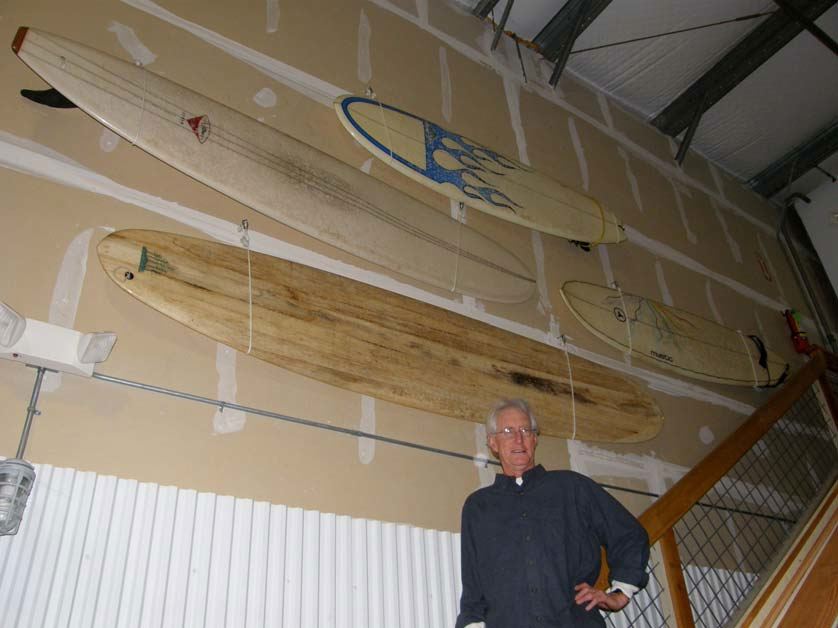 Beginning in 2005, Three Sticks became a bona fide winery with the leasing of a warehouse space in Sonoma and the establishment of a winery in that locale primarily geared for Pinot Noir. The winery is of modular design and very compact, allowing the equipment to nest inside other equipment when not in use. There are multiple open top 2.5-ton stainless steel fermenters fitted with glycol temperature control. A few square concrete fermenters are also in use offering desirable fermentation dynamics. The concrete fermenters are slow to warm and slow to cool so that peak temperature plateaus and remains relatively stable. Concrete eggs are also used for Chardonnay. The winery is a California Sustainable Certified Winery and is the only winery in its complex to have a solar instillation. The Pinot Noir winemaking at Three Sticks is simple. Nearly all the grapes are picked at night and brought into the winery cold. The grapes are extensively sorted, then de-stemmed but not crushed. The cold soak varies from 2 to 5 days and fermentation may be launched with inoculated yeast although indigenous yeast fermentations are often in the mix as well. Don says, “Good Pinot Noir is all about texture,” and he uses various yeast ferments to bring out alluring texture. Ferments are relatively cool, at about 85º, with pneumatic punch downs. 80% of the fermentation is whole berry with 10% to 20% whole cluster in the bottom of the open top fermenters. After the free run juice is drained off, the wine is pressed to barrel. Occasionally the press wine is kept separate depending on taste, but is usually combined. Alcoholic and malolactic fermentations finish in barrel and frequent lees stirring is employed until malolactic fermentation is completed. The wines are aged 14-15 months in about 50% new French oak barrels (except the Sta. Rita Hills Pinot Noir which is aged in up to 100% new French oak barrels). There is one racking before bottling and the wine may or may not be filtered depending on the wine’s status, but is usually not filtered. The finished wine is aged 10 months in bottle before release. Durell is the estate vineyard for Pinot Noir and Chardonnay. The vineyard’s rocky soils and cool climate are ideal for Chardonnay and Pinot Noir. Due to its unique location, the 400 acres of land on which Durell Vineyard is situated has vines in three different appellations: Carneros, Sonoma Coast and Sonoma Valley. The backbone Pinot Noir clones in the vineyard are 114, 115, 667, 777 and 828 but the newer plantings include Swan and Calera selections and the Emeritus “Elite clone” from the Hallberg Vineyard in the Russian River Valley. “The James” Sta. Rita Hills Pinot Noir is sourced from the Burning Creek Vineyard and is named for Bill’s son who has a free-spirited personality. In 2009, The James was declassified, but produced in 2010. In 2010, Silver Eagle Vineyard in the Russian River Valley was added as a vineyard-designate. In 2011, two blocks were added from La Rinconada Vineyard in the Sta. Rita Hills AVA and will be included in the James bottling at some point. In 2012, an additional block of grapes was obtained from Sanford & Benedict Vineyard, Bien Nacido Vineyard and Gap’s Crown Vineyard (which Bill now owns). The winery is expecting to add grape sources from Anderson Valley and the Santa Lucia Highlands in 2013. In 2014, two new vineyards will come online: DuPont Vineyard near Silver Eagle Vineyard and Wilson Vineyard north of Sebastopol at which time Silver Eagle will be discontinued as a fruit source. The evolution of grape sources is a work in progress and will not be solidified for several years. The Pinot Noirs are produced in very small lots of 200 to 250 cases. The biggest bottling of Chardonnay is 1,000 cases, and the Cabernet Sauvignon lots are about 250 to 300 cases each. I tasted a number of Pinot Noirs with Don and the Director of Vineyard Operations for Durell Vineyards, Rob Harris, who also gave me a tour of Durell Vineyard. The 2010 wines will be released March 23, and that date is none to soon, for the winery has been out of Pinot Noir to sell for four months and even longer for Chardonnay. The wines are sold primarily through an allocation list and are featured in many fine-dining establishments. Visit the website at www.threestickswines.com. Why buy these wines? They are primarily sourced from a relatively old-vine vineyard (Durell) farmed by an experienced vineyard manager, crafted by a talented, veteran winemaker, and produced by a winery under a management with years of involvement and expertise in the wine business.
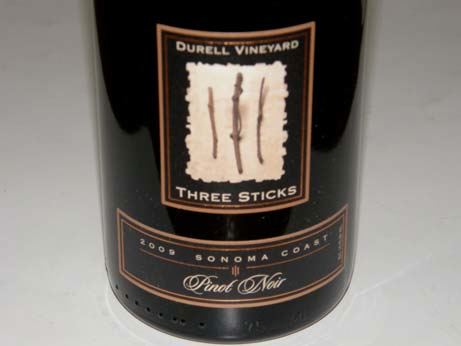
2007 Three Sticks Durell Vineyard Sonoma Coast Pinot Noir 14.7% alc., pH 3.60, 375 cases. Clones 115 and 777. Clones 115 and 777. Aged 15 months in 50% new French oak barrels. · Moderately dark reddish-purple color in the glass. Aromas of fresh black raspberries, black cherries and vanilla. Delicious mid weight core of dark berry fruits with a hint of anise-infused oak. Silky, with mild tannins and bright acidity, finishing with good fruit intensity, leaving a touch of heat in its wake. Very good.
2008 Three Sticks “The James” Sta. Rita Hills Pinot Noir 14.6% alc.. 13-year-old vineyard planted to clones 113, 114, 115. · Moderate reddish-purple color in the glass. Interesting aromatic profile that includes dark cherry, oak, vanilla and savory herbs. Soft and easy to drink with supple tannins, featuring bright cherry flavor accented with oak. Good.
2009 Three Sticks Durell Vineyard Sonoma Coast Pinot Noir 14.7% alc., pH 3.70, TA 0.63, 253 cases. 10% whole cluster. Clones 667, 115 and 777. · Moderately dark reddish-purple color in the glass. Shy initially, opening with swirling to reveal aromas of spiced dark berries, herbs, and dark rose petals. Striking mid palate presence with a vanguard of black cherry fruit that really coats the mouth and hangs on for a memorable, long finish in which the fruit slips off the back of the palate like a silk sheet. Fine grain tannins add structure and oak is beautifully integrated. A lot to like. Very good (+).
2010 Three Sticks “The James” Sta. Rita Hills Pinot Noir 14.6% alc., pH 3.62, TA 0.71, 145 cases, $60. 10% whole cluster. Aged 14 months in 70% new French oak barrels. · Moderately light reddish-purple color in the glass. Very shy cherry fruit with notes of stem, herbs and oak on the nose. Crisp and lively on the palate, with exotically spiced dark cherry fruit, featuring very fine grain tannins and complimentary oak in the background. Finishes long and vibrant. Very good.
2010 Three Sticks Silver Eagle Vineyard Russian River Valley Pinot Noir 15.50% alc., pH 3.67, TA 0.62, 50 cases, $60. Just north of Occidental in the Green Valley of Russian River Valley AVA. Calera selection. 70% whole cluster. Aged 14 months in 50% new French oak barrels. · Medium reddish-purple color in the glass. Super ripe fruit profile on the shy nose. Full-bodied essence of dark red cherries and berries with a prominent nutty note in the background. Balanced, modest tannins. Linear and rather closed today which could be related to the significant whole cluster. Need to spend more time with this wine. Good.
2010 Three Sticks Durell Vineyard Sonoma Coast Pinot Noir 14.7% alc., pH 3.65, TA 0.70, 282 cases, $65. From 3 blocks, 667, 115 and 777. 15% whole cluster. Aged 14 months in 50% new French oak barrels. · Medium reddish-purple color in the glass. Very shy fruit on the dusty, earthy nose. Juicy plum and dark cherry middleweight flavors clothed in balanced tannins, offering a silky mouth feel and a good cut of acidity on the finish. Still young and needs more time to fully integrate the oak, but the potential is obvious. Very good.
The Donum Estate: The “Ultimate Pinot Noir Project”Donum translates from the Latin to “gift” and refers to grapes as a gift of the land. The winery is devoted to estate Carneros Pinot Noir and Chardonnay (The Donum Estate and Ferguson Block Vineyard), and estate Russian River Valley Pinot Noir (Nugent Vineyard), with a 2011 Anderson Valley Pinot Noir (Angel Camp Vineyard) making its debut soon from the 2011 vintage. Winegrower and President, Anne Moller-Racke first arrived in Carneros in 1981 from Germany to help run Buena Vista which had been acquired by the German company, Racke. Anne trained with industry icons including Andre Tchelistcheff. She became Vineyard Manager in 1983 and expanded the vineyard acreage at Buena Vista Carneros from 540 in 1981 to 935 a decade later and planted what was then the Tula Vista Ranch in 1989-1990. With the sale of Buena Vista Carneros to Allied Domecq in 2001, Anne and Markus Moller- Racke divorced, and Anne split off 147 acres of the Buena Vista estate, retaining Tula Vista Ranch, but renaming it The Donum Estate. She also grew grapes for the rejuvenated Robert Stemmler label which had been acquired. Today, Anne farms 45 acres of vines at the home ranch, 20 acres of the old-vine Ferguson Block Vineyard nearby, the 16-acre Nugent Vineyard in the Russian River Valley (which Anne planted originally in 1997), and the 11-acre Angel Camp Vineyard in Anderson Valley.
 Upon acquiring The Donum Estate, Anne began an extensive rehabilitation of the Donum Ranch vines with all blocks individually and precisely farmed, and each vine hand worked to reach its greatest potential. The Donum Ranch sits on Diablo clay and is divided into eleven blocks with several heirloom selections (Calera, Chalone, Hanzell, Martini, Roederer and Swan) and Dijon clones 115, 667 and 777. The Anderson Valley Angel Camp Vineyard is 11 acres of David Bruce, Martin and Swan selections, Dijon clones 115, 667 and 828 and Wädenswil clone. The 16-acre Nugent Vineyard in the Russian River Valley is planted to Dijon clones 115 and 667 and Pommard clone. The Donum Estate Pinot Noir, first produced in 2001 (150 cases of Roederer and Martini selections), was intended to be a complex wine with clonal diversity, and it soon became a benchmark for Carneros Pinot Noir. In addition, certain blocks were eventually selected to provide special designated bottlings including West Slope and East Slope. West Slope is a Roederer selection that was considered a cru and bottled on its own beginning in 2007. The 6-acre East Slope block is the coolest site, grafted to a Calera selection in 2004, and bottled on its own beginning in 2009. A third designated bottling appeared in 2008 from the 4A01 block (old Martini selection) of Ferguson Block Vineyard that Anne has farmed for over 25 years. This was bottled as a stand alone wine to commemorate the 100th birthday of the vineyard owner, Thomas Ferguson, and was labeled Thomas. In late December of 2011, Anne sold The Donum Estate to Winside, Inc., a partnership of Danish investors. The acquisition kept in place the team that developed The Donum Estate over the past decade. With the infusion of capital, new vineyards are being developed in the Russian River Valley and Anderson Valley as well as an expansion of plantings at The Donum Estate to include, for the first time, Pommard clone vines. Kenneth Juhasz began working with the original winemaker, Ken Bernards, in 2002, and became the consulting winemaker for both The Donum Estate and Robert Stemmler labels in 2005. His assistant, Dan Fishman, who worked with Kenneth for five years, became the consulting winemaker in recent months. Since the first release of The Donum Estate Carneros Pinot Noir was 2001, the winery is currently celebrating “A Decade of Donum” with the release of the 2011 vintage. Visit www.thedonumestate.com/DonumVideo.html to view a video about “A Decade of Donum.” Current production is 2,300 cases for The Donum Estate and 9,000 cases total including The Donum Estate and Robert Stemmler labels together. The Donum Estate wines are sold primarily through the winery’s wine club, with some wines available through the website store at www.thedonumestate.com. A Carneros Chardonnay from old Wente selections of budwood from the Winery Lake and Larry Hyde vineyards was first produced in 2007. The Donum Estate is not open to the public, but tasting is available by appointment. Why buy these wines? It is a hackneyed phrase, “Wine is made in the vineyard,” but it is a truism. At the Donum Home Ranch in Carneros, Anne has managed the vines for 30 years and at the estate vineyard in the Russian River Valley she has done the same for 16 years. She has led the renaissance in Carneros that left behind much of the mass farming of grapes of the past, advancing the precision viticulture that is prevalent today that in turn has lead to distinctive ultra-premium wines.
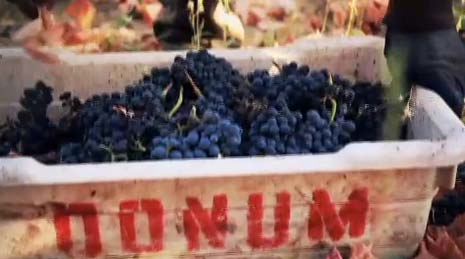 I tasted with Anne and Dan at The Donum Estate and later sampled the latest 2010 releases at home. We tasted Pommard clone Pinot Noir from a 5-acre 2009 planting at Nugent Vineyard. The 2011 vintage was light in weight with appealing cherry and strawberry flavors. A 2012 early pick bottling aged in 40% new oak was beautiful with attractive crispness. A 2012 late pick aged in 70% new oak had a riper, darker fruit profile, more intensity, and more lusciousness. The Angel Camp Vineyard in Anderson Valley shows promise. Yields here have been kept low to about 1 to 1.5 tons-per-acre. The wines are all free-run juice. A 2012 blend of clones from the vineyard displayed precocious aromas and flavors with a vibrant fruit core. A 2012 Wädenswil clone bottling featured dark plum fruit and was more rustic and austere. A 2012 Wädenswil clone 100% whole cluster was showing its youth with a more noticeable firm tannic structure, a slight green note on the finish, but with an appealingly soft texture. A 2011 Angel Camp Vineyard Pinot Noir was still primary (fruity) but with a delicious black raspberry core and very soft tannins. A 2011 Angel Camp Vineyard Reserve bottling was darker in color, exhibited more structure and intensity, and more potential. Finally, we looked at two Donum Estate bottlings from the 2008 vintage: one filtered and one unfiltered. The filtered wine was simple in comparison and fruitier, becoming somewhat dull over time in the glass. The unfiltered wine was more vibrant, nuanced and savory. I took the opened wines with me and sampled them the following day. The filtered wine was fruit-forward and spicy. The unfiltered wine had more color, more complexity, and continued to blossom beautifully over time in the glass. Clearly, I preferred the unfiltered version. The 2010 Donum wines are not dainty. They are richly fruited with vibrant aromas. When I opened the wines at home to taste, the room was instantly filled with a sweet Pinot perfume. The 2010 wines have a hard act to follow as the 2009 Donum wines were extraordinary, but they are charming in their own right. Anne feels that patience will be needed for the 2010 wines to bring them into balance.
2010 Donum Estate Grown Gold Label Carneros Pinot Noir 14.5% alc., $72. · Moderately dark reddish-purple color in the glass. Aromas of dark red fruits, sweet oak, spice, mocha and pine. Very flavorful, featuring very ripe dark strawberry, raspberry and cherry fruits with a well-spiced finish. Oak is well integrated and the tannins are nicely balanced. The wine exhibits good focus and definition, showing more delicacy than the Black Label Estate bottling. Tasted over two days from a previously opened and re-corked bottle, the wine lost a bit of mid palate and finishing intensity. Good (+).
2010 Donum Estate 10th Anniversary Black Label Estate Grown Carneros Pinot Noir 14.5% alc., 100 cases, $120. A best barrel blend from Donum Ranch crus. Aged in 25% new French oak barrels. · Moderate reddish-purple color in the glass. Enticing aromas of fresh black cherries, strawberries, spice and complimentary oak vanillin. A little richer and more structured than the 2010 Estate Gold Label bottling. The wine offers layers of flavor including very ripe black cherry, black currant, dark chocolate, grilled meat, and tantalizing oak. Much better the next day from a previously opened and re-corked bottle showing better integration of oak, aromas that jumped out of the glass, and a finish to die for. Exceptional.
2010 Donum Estate Grown East Slope Carneros Pinot Noir 14.5% alc., $90. Martini clone. · Moderately dark reddish-purple color in the glass. The aromas draw you into the glass, with notes of purple grapes, black cherries, cassis and mushrooms on the grill. Impressive fruit concentration with lip-smacking black raspberry and black plum fruit flavor, with the signature Carneros earthiness in the background, still sporting firm tannins which will need time to soften. Tasted two days later from a previously opened and re-corked bottle, the wine was more giving and clearly displays the goods to age. Very good.
2010 Donum Estate Grown West Slope Carneros Pinot Noir 14.5% alc., $90. Limited production in this vintage and available only to wine club members. · Medium reddish-purple color in the glass. Vibrant aromas of black cherries, peppery spice, stem and flowered meadow. Delicious core of perfectly ripened black cherry and black raspberry fruit with an undertone of dark chocolate and anise. The fruit really sings, reaching a crescendo on the powerful finish. Tasted over two days from a previously opened and re-corked bottle, the wine is clearly built to age and will benefit from cellaring to bring the oak and tannins into optimum balance. The jewel of the Donum Estate.
2010 Donum Estate Grown Russian River Valley Pinot Noir 14.5% alc., $72. · Moderately dark reddish-purple color in the glass. Lovely and intense aromas of ripe Bing cherries with a hint of spice, brewed tea, hazelnut and mocha, becoming more effusive over time in the glass. Dark cherries are featured with a hint of Coca- Cola, stem and oak. Nicely crafted in a middleweight style, offering a juicy, lively drinking experience. Good.
2010 Donum Estate Grown Reserve Russian River Valley Pinot Noir 14.5% alc., $90. · Dark purple in the glass. A brooding wine at present, offering shy aromas of black cherries, cassis and black raspberries with subtle new oak scents that are evident from entry to finish. Full-bodied, displaying very intense, ripe blackberry and boysenberry fruit flavors with an undertone of cola, black tea and earth. Incredible power, with a firm tannic backbone, finishing with both length and impressive fruit presence. This wine definitely needs more time in bottle and may warrant a more glowing rating over time. Good (+).
Onward Wines: Loving Hands & A Feminine TouchFaith Armstrong-Foster’s story is quite an endearing one for a winemaker. She began her career as the Tasting Room Manager at Ironstone Vineyards, later working in marketing and promoting wine events in San Francisco. She hatched a plan to attend University of California at Davis, become a winemaker, and return to her native British Columbia. She did attend University of California at Davis on a full Regents Scholarship and graduated in 2006 with highest honors. However, her marriage to Sean Foster, now the Senior Winemaker at Merryvale Vineyards, derailed her plans and she settled into life in Napa. After graduation, Faith became a Lab Technician for Frank Family Vineyards, quickly moving up to Enologist and then Assistant Winemaker. In 2009 she launched her own label, Onward Wines, when she was offered fruit from Cerise Vineyard. Since early 2011 Faith has focused on her own wines while consulting for Napa Station. This sounds easy enough, except that she has three boys and a new baby girl. During the 2010 harvest, she delivered the girl between harvesting grapes from two of her major Pinot Noir vineyard sources.
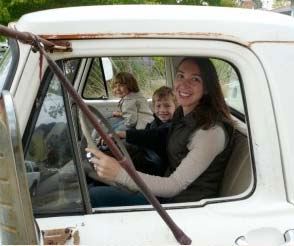 The name, Onward, comes from the name of a childhood dinghy that was her family’s primary mode of transportation including her trips to school growing up on Victoria Island. The label pictures the stern of that boat upon which vineyard sites are listed like a boat’s hailing port. Faith has crafted many varietals but loves to make and drink Pinot Noir. She usually produces about 600 cases annually of Onward Rosé and Pinot Noir from two excellent vineyard sources. In the 2010 vintage, total output was 150 cases of Cerise Vineyard Anderson Valley Pinot Noir and 250 cases of Hawkeye Ranch Redwood Valley Pinot Noir. Cerise Vineyard is well known for its superb fruit. This steep hillside vineyard sits at 650 to 1000 feet and is sustainably farmed using organic and biodynamic principles (I wrote a feature on Cerise Vineyard: www.princeofpinot.com/article/1223/). Ten clones of Pinot Noir are planted on seven rootstocks. Soils are thin, hard and marginal with resulting yields in the range of 1 ton per acre. The vines at Hawkeye Ranch are 35-year-old Martini clone. The vineyard is fifth generation family owned and the resident winegrowers are good friends with Faith, working closely with her to satisfy her farming preferences. I met Faith at Starmont Winery in Napa Carneros where she custom crushes her wines, and tasted barrel samples and finished wines. The Pinot Noirs are crafted with loving attention beginning with a long cold soak, 100% de-stemming without crushing, and aging in 25% new French oak barrels with gentle lees stirring every three weeks when the barrels need topping off. After 10 months of maturation in barrel, the wines are bottled without fining or filtration. The low use of new oak and gentle handling at every stage leads to true vineyard expression. The Cerise Vineyard Pinot Noir typically is slower to reach a desirable drinking window so she advises more patience with this bottling. Faith would like to hold back the wines longer, but economical considerations and consumer and restaurant demands dictate that she release them sooner. The 2013 vintage Rosé from barrel was tasted from both vineyards. The juice was bled over 3 days from tank fermented Pinot Noir that had been racked to barrel and was undergoing aging. Both wines were high-spirited, fine examples of Rosé. The 2012 is the current release ($18). Both vineyard Pinot Noirs were tasted out of barrel with the 2011 vintage more elegant and delicate, the 2012 vintage more intense and pleasurable, especially the Cerise. Clearly, these wines reflect impeccable winemaking. The finished 2010 wines were tasted from bottle. The 2010 Onward Hawkeye Ranch Redwood Valley Pinot Noir ($38) is a fine example of Martini clone Pinot Noir. Darkly fruited with a savory, earthy component, admirable balance and reasonable approachability. The 2010 Onward Cerise Vineyard Anderson Valley Pinot Noir ($58) is an exceptional wine that shows its breeding. Light in color, but exceedingly flavorful, with a delicious core of raspberry and cherry fruit framed by hints of spice and oak, and clothed in soft tannins. I tasted this wine also the following day from a previously opened bottle and it had blossomed further, and was one of the better Pinots I tasted on this road trip. Onward wines are sold through a mailing list at www.onwardwines.com and may be purchased by contacting salesinquires@onwardwines.com. The wines have some distribution in restaurants and the states of California, New York and Texas. Why should you buy these wines? Pinot Noir responds to gentle, attentive care and small scale production, both of which Faith’s loving winemaking exemplifies. Any woman that can manage a family of four small children and a household, and still produce wines of this caliber deserves admiration and support. She definitely impressed me. Onward and upward!
Gary Farrell Vineyards & Winery: New Winemaker Carries on TraditionWhen I first met Theresa Heredia a few years ago working as part of a team of winemakers at Freestone Vineyards, I was impressed by her gumption, dedication, and innovative ideas. The relatively large new and modern Freestone winery owned by Joseph Phelps, which opened in 2007, permitted her the opportunity to experiment with a number of leading edge winemaking techniques, and she responded by crafting some remarkable Pinot Noir and Chardonnay wines at Freestone.
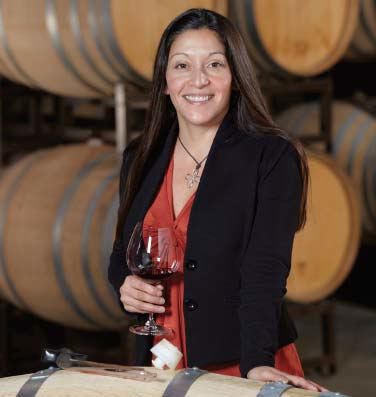 On May 1, 2012, Theresa joined Gary Farrell Winery, replacing Farrell-trained Susan Reed, and bringing with her invaluable experience in small-lot, single-vineyard Chardonnay and Pinot Noir winemaking. She quickly embraced the Gary Farrell Winery house style developed over the past 30 years which emphasizes elegance and balance, while putting a finespun personal stamp on the wines. It also gave her the opportunity to work with a diverse pallete of vineyards managed by legendary growers. One example of subtle change that Theresa is instituting is in the production of Chardonnays. The Chardonnay grapes at Gary Farrell have always been picked earlier, but in 2012, Theresa harvested even earlier, at about 22º to 23º Brix. She prefers to “build” the Chardonnay in the cellar where the effect of barrels and lees management lead to secondary characters and allow the wine to put on more weight. The other option that is commonly practiced by winemakers is to build in the character of Chardonnay on the vine, letting the grapes hang to 24º to 25º Brix, a less preferable option for Theresa because of the potential for ripe and premature oxidative characters (and sometimes the need to resort to alcohol reduction). Winemaker Gary Farrell, who left in 2006 to concentrate on his own label, Alysian, left behind a legacy of winemaking protocols. The techniques for Pinot Noir include native yeast fermentations, saignée to add depth, foot treading to allow extraction but avoid over extraction, and a modest percentage of whole cluster to contribute tannin, backbone and spice (9%-22% in 2012). Fermentation is carried out in 4-7 ton jacketed open top fermenters following a 5-7 day cold soak. As fermentation reaches completion, the wine is gently pressed (primarily free run and some press fraction juice are used for the Russian River Valley Selection Pinot Noir, while single-vineyard Pinot Noirs are made from 100% free-run juice only). The wine is then transferred by gravity to medium-toast French oak barrels from Burgundian coopers where the Russian River Valley Selection typically ages for 10 months and the single-vineyard Pinot Noirs spend up to 15 months. New oak varies from 40% to 50%. The wines are racked only once before bottling. Theresa has added new coopers to the barrel mix based on her experience and plans to use some oak tanks (5 ton) which allow warmer, natural ferments and gentler extraction. Chardonnays are fermented in 100% French oak barrels (40% new) from several Burgundian cooperages, undergo full malolactic fermentation, and age on their yeast lees, with weekly stirring during malolactic fermentation and monthly thereafter, for seven months before bottling. Theresa plans to incorporate the use of oak puncheons (500L) which facilitate the integration of oak aromas and flavors. Both Russian River Selection Wines (Pinot Noir, Chardonnay and Sauvignon Blanc) and Vineyard-Designate Wines are produced at Gary Farrell. The close grower relationships developed over three decades allows Gary Farrell Winery access to many highly desirable vineyards in cool growing regions such as Bacigalupi, Rochioli, Allen, Westside Farms and Hallberg.
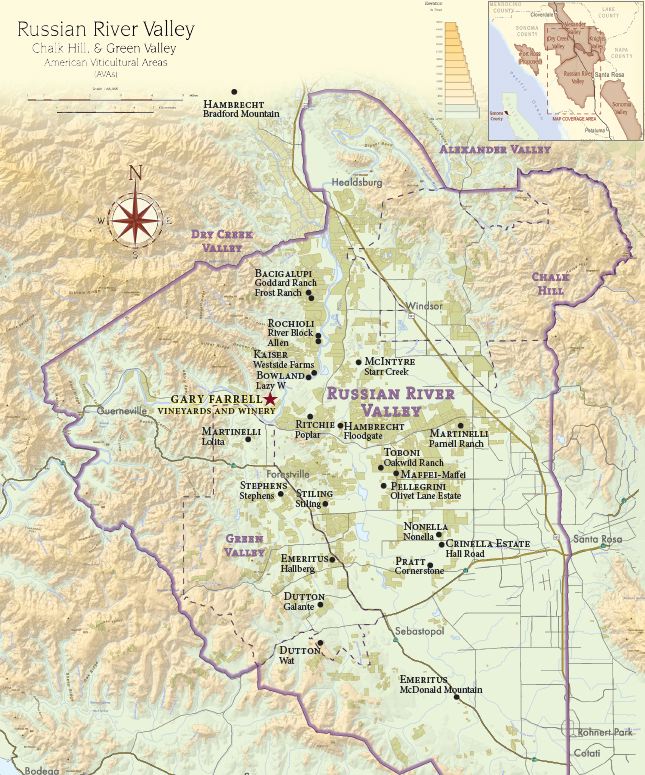 Gary Farrell Winery is owned by The Vincraft Group, which also owns Kosta-Browne. The owners are not content with the status quo, always striving to push quality to a higher level. To this end, they are seeking additional elite grape sources within the Russian River Valley. Production is estimated to expand from its current 20,000-case level to 30,000 cases, but not beyond that. I highly recommend a visit to the inviting tasting room that is open daily. Many of the single-vineyard wines are only sold through the tasting room and to Grand Crew wine club members. A new set of wines will be offered beginning with the 2011 vintage known as the Inspiration Series. These will be small lot unique wines reflecting the “inspiration” of the winemaker. Visit the website at www.garyfarrellwinery.com. I met with Theresa in the winery’s ridge-top tasting room on Westside Road one morning, admiring the breathtaking view, and chatting at length about Theresa’s future goals at Gary Farrell Winery. We tasted through the lineup of 2010 Gary Farrell Chardonnays and Pinot Noirs (these were crafted by Susan Reed) and a few barrel samples of the 2012 vintage as well. I have reviewed a number of Gary Farrell wines in the past, so I was not surprised by the consistent high quality of every bottling. Theresa was quite excited about the 2010 vintage which produced wines more “European” in style, especially the Chardonnays. I shared her enthusiasm after tasting the wines. Why buy these wines? Just look at the exceptional vintage sources. Any more questions?
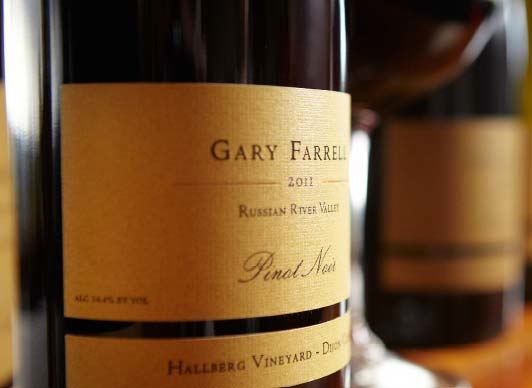
2010 Gary Farrell Russian River Selection Russian River Valley Chardonnay 14.2% alc., pH 3.22, TA 0.73, 2,752 cases, $32. Released August 2012. A blend from four notable Russian River Valley vineyards. · Light straw color and clear in the glass. Lemony, buttery, nutty and slightly smoky on the nose. Light and crisp, with lemon custard and peach flavors, lifted by bright acidity, finishing with a refreshing zest of lemon. Good.
2010 Gary Farrell Westside Farms Russian River Valley Chardonnay 14.4% alc., pH 3.29, TA 0.74, 372 cases, $38. Released May 2012. From a 40-acre vineyard planted in 1989 to Clone 4. Large spacing, tall vines, moderately high yields yet good concentration and balance. · Light straw color and clear in the glass. Shy, but pleasing aromas of lemon, lime, roasted nuts and a tropical note. Good concentration of baked apple, white peach, honey, caramel and nutty flavors. Very good.
2010 Gary Farrell Rochioli Vineyard Russian River Valley Chardonnay 14.1% alc., pH 3.27, TA 0.65, 288 cases, $45. Released November 2012. · Light straw color and clear in the glass. A little tight this morning, offering delicate aromas of lemon curd, almond skin and vanilla. Crisp, juicy core of lemon and pear flavors with a powerful and lengthy finish. Very good.
2010 Gary Farrell Rochioli-Allen Vineyards Russian River Valley Chardonnay 14.0% alc., pH 3.35, TA 0.66, 298 cases, $45. Released February 2013. Multiple clones from both the renowned Rochioli and Allen vineyards. · Light straw color and clear in the glass. Shy aromas of citrus, baked pear, and spice lead to a well-composed palate-filling wine featuring flavors that echo the aromas. This wine is all about concentration and length, yet has the vivid acid backbone needed to energize the flavors and lift the finish. Exceptional.
2010 Gary Farrell Russian River Selection Russian River Valley Pinot Noir 14.0% alc., pH 3.45, TA 0.65, 6,842 cases, $42. Released December 2012. Sourced from seven notable Russian River Valley vineyards. Aged 8 months in 40% new French oak barrels. · Moderate reddish-purple color and clear in the glass. The red fruit spectrum of strawberry, raspberry, cranberry and cherry is featured with appealing accents of spice and oak. Good acidity makes for refreshing drinking. A solid, even impressive appellation wine. Good.
2010 Gary Farrell Bien Nacido Vineyard Santa Maria Valley Pinot Noir 14.0% alc., pH 3.38, TA 0.724, 483 cases, $55. Released May 2012. Sourced from the legendary “Q Block.” Aged 8 months in 50% new French oak barrels. · Moderate reddish-purple hue and clear in the glass. Hold on to your seat when you taste this one. Aromas of dark red cherries and spice leap out of the glass. Clean and juicy on the palate with middleweight flavors of well-ripened cherries and raspberries, set off by the signature peppery spice of this region. Finishes with plenty of verve. Exceptional.
2010 Gary Farrell Rochioli Vineyard Russian River Valley Pinot Noir 14.0% alc., pH 3.41, TA 0.72, 291 cases, $65. Released November 2012. Sourced from blocks planted in 1974, 1995 and 2000 with some cuttings taken from the original “mother” block planted in 1968. Pommard clone. Aged 13 months in 50% new French oak barrels. · Moderately dark reddish-purple color and clear in the glass. This wine is still very young but the potential is obvious. Shy aromas of Bing cherries and spice with a hint of citrus and mint. Discreetly concentrated flavors of black cherries, rhubarb, cola and spice wrapped in balanced tannins and finishing with uncommon power. Very good.
2010 Gary Farrell Hallberg Vineyard Russian River Valley Pinot Noir 14.0% alc., pH 3.41, TA 0.64, 520 cases, $55. Released September 2012. A 100-acre vineyard on Highway 116 in Sebastopol farmed by owner Kirk Lokka. Clones 667, 777, 828 and Pommard. Aged 13 months in 50% new French oak barrels. · Deep reddish-purple color and clear in the glass. This wine reflects nicely the terroir of this vineyard displaying aromas of chocolate-covered black cherries and black plums with a slight savory tone, and flavors of black cherry, cola, anise and dark chocolate. The most concentrated wine in the lineup with firm, fine-grain tannins, and a fruit-driven finish. Very good.
John Tyler/Bacigalupi Wines: Honoring the LegacyThe Bacigalupi family are Russian River Valley originals, with a history of farming dating back to 1956 when Charles and Helen Bacigalupi purchased the 121-acre Goddard Ranch on Westside Road. Through his dental practice, Charles got to know a local grape grower, Paul Heck, who along with Paul’s brother and Carl Wente had acquired Korbel Champagne Cellars in Guerneville. Charles was interested in expanding the limited wine grape plantings on his property and Paul advised him to plant Pinot and Chardonnay. In 1964, Charles obtained Pinot Noir and Chardonnay budwood from Karl Wente’s vineyard in Livermore and these plantings were among the earliest in the Russian River Valley. On March 21, 2013, the Healdsburg Museum & Historical Society honored Charles and Helen Bacigalupi at the society’s 15th Annual Pioneer Award Dinner at Trentadue Winery. Today, the Goddard Ranch has 120 vineyard acres and is the oldest ranch that the Bacigalupis farm. This property contains the Chardonnay planted to an old Wente clone that was one of the main sources (40%) for the legendary 1973 Chateau Montelena Chardonnay that won the 1976 Paris Tasting. Charles son, John, was raised on the Goddard Ranch and after a lifetime of winegrowing experience, teamed with his spouse, Pam Heck Bacigalupi, and fourth-generation nephew and winemaker Tyler Heck to found John Tyler Wines. The Bacigalupi’s twin sister daughters, Nicole and Katey, are now the face of John Tyler Wines and were instrumental in the building of a tasting room on Westside Road to feature the wines.
 John Tyler Wines first produced a Pinot Noir from estate grapes in 2002, with Tyler Heck as the winemaker. I have visited the family in the past, tasted every Pinot Noir release, and featured them in a previous article: www.princeofpinot.com/article/1194/. I recently visited Katey and Pam at the tasting room to find out the latest scoop on the winery. The original Chardonnay vineyard planting at Goddard Ranch, dating to 1964, is still untouched, but production is very limited. To preserve the legacy of the vineyard, the Bacigalupis have taken cuttings from the original vineyard, grafted them over to a new planting, and released the first Bacigalupi Chardonnay from the old Wente clones in the 2011 vintage. The new label is similar to the original Bacigalupi label that began as a collaboration between the Bacigalupi family and the neighboring Belvedere winery. The new label (see below) is reminiscent of the old one, but with an updated look and an elegant etched bottle. To honor the legacy of winegrowing of the Bacigalupi family, the name of the winery is being transitioned from John Tyler Wines to Bacigalupi Wines. This transition will be completed for the winery’s Pinot Noirs beginning with the 2012 vintage. The winery’s lineup will include Bacigalupi Rosé, Pinot Noir, Chardonnay, Petite Sirah and Zinfandel. The winery’s Pinot Noir is known for its extended age ability.
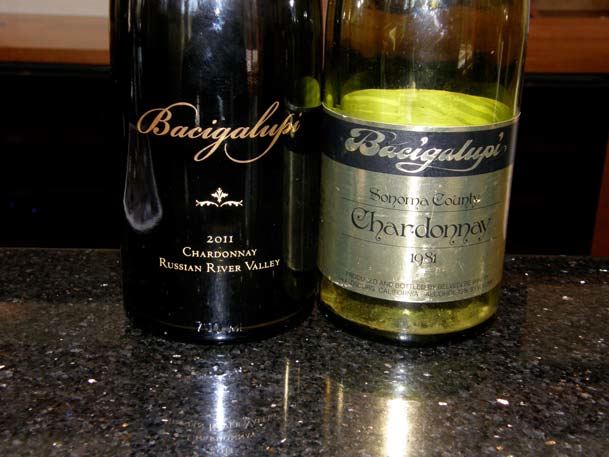 Along with the name change, the winery has hired a new consulting winemaker, Ashley Hertzberg, who will be crafting the Bacigalupi line of wines. Ashley is another of many aspiring doctors who decided to pursue winemaking instead. She began her wine career as a laboratory technician at Owl Ridge Wine Services in Sebastopol, and developed her winemaking skills from producers such as Merry Edwards, Anthony Austin and Scott Covington. Ashley then became the assistant winemaker at Mauritson in Dry Creek Valley, and later a consulting winemaker for Saini Vineyards and Amista Vineyards. John Tyler/Bacigalupi wines are available through the winery’s tasting room which is open daily and the online website store at www.johntylerwines.com. Why buy these wines? These wines have a pedigree, a legacy and a distinctive stamp. The Bacigalupi family embraces the consumer’s interest and seeks to educate. This is a winery you can enjoy, with many happenings such as the Spring Release Party, Pinot & Paella, on Saturday, April 13, 2013.
2011 Bacigalupi Russian River Valley Chardonnay $52. 86% malolactic fermentation. Unfined and unfiltered. · Light straw color in the glass. Classic and classy Chardonnay, featuring aromas of lemon, lime, tropical fruits, and banana with a savory hint. Slightly creamy on the palate with crisp apple, pear and citrus flavors finishing with a refreshing juiciness. Got lobster? Very good.
2009 John Tyler Bacigalupi Vineyard Russian River Valley Pinot Noir 825 cases, $45. 1-year of bottle age. Release April 1, 2013. · Moderate reddish-purple color and clear in the glass. Very European in style with a savory nose of leaf, herbs, cherries and strawberries. Deep, lip-smacking cherry flavor with a spicy undertone. Impeccable balance and appealing elegance. This is a show-stopper from a superb vintage. Very good.
2007 John Tyler Bacigalupi Vineyard Wente Clone Russian River Valley Pinot Noir 14.4% alc., 418 cases, $45. · Medium reddish-purple hue and clear in the glass. Aromas of very ripe black cherries and berries with a floral accent. Intense flavors of black cherries, black currant and cassis with ripe, full tannins and a savory note in the background. From a bottle opened one day prior. Good.
Davis Family Vineyards: Russian River Valley DelightsProprietor and winemaker Guy Davis and I go way back. I have tasted every Pinot Noir Guy has crafted over the past ten vintages, and he has shown me the ability to capture the complex aromas and flavors, the silky textures, and the essence of Russian River Valley terroir. The perfect Pinot Noir has not been produced yet, but some of Guy’s ephemeral Pinot Noirs have come darn close. In the last couple of years, I have gotten to know Guy’s son, Cole, who has become increasingly involved in the winery’s winemaking. I recently visited the Davis Family Vineyards tasting room in Healdsburg, and although Guy was vacationing over Valentine’s Day with his wife in Paris, Cole was able to lead me through a tasting of the 2010 vintage Pinot Noir wines. The Davis family is pictured below with Guy and family in the center and Cole and family to the right.
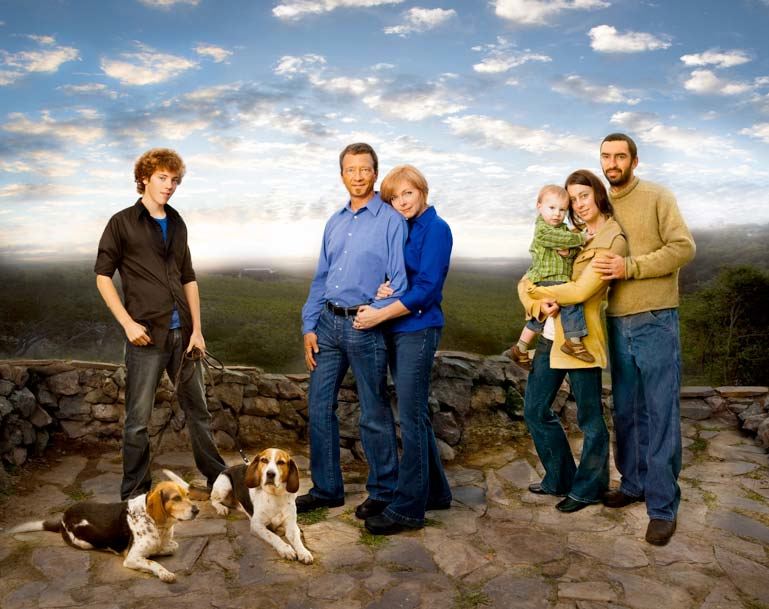 Guy farms 7 acres of Pinot Noir on a vineyard adjacent his home on Laguna Road in the Russian River Valley which provides the fruit for the Russian River Valley, Soul Patch and Pinnacle Pinot Noir bottlings. He also produces vineyard-designated Pinot Noir from Starr Ridge and Horseshoe Bend vineyards, both in the Russian River Valley. Guy is a talented winemaker who makes many varietals besides Pinot Noir all of which are top notch, and even crafts an olive oil. The 2010 vintage Pinot Noirs are nearly sold out. Robert Parker rated them very highly and the wines flew out the door. Forty percent of the 2010 crop was lost due to the weather, with Soul Patch ending up with the largest production. Some wines are reserved for Wine Club members. Visit the website at www.daviswines.com for information and availability or contact Annie Rambo at 866-338-9463. The wines are made from low-yielding vineyards, 100% de-stemmed, and generally aged in 33% new, 33% 1- year, and 30% 2-year-old French oak barrels. Why buy these wines? If you are a fan of Russian River Valley Pinot Noir, you can’t find any better examples anywhere. Year in and year out, the wines are stellar. Family owned by warm, classy people.
2010 Davis Family Vineyards Russian River Valley Pinot Noir 14.1% alc., $40 (sold out). A blend of four vineyards. · Moderately light reddish-purple color in the glass. Bright aromas of Bing cherries and spice with optimum fruit ripeness. Vivid middleweight flavors of cherry cola, rhubarb and spice supported by soft tannins. The least layered wine in the lineup, but very appealing for current drinking. Good (+).
2010 Davis Family Vineyards Soul Patch Russian River Valley Pinot Noir 14.1% alc., $50. A favorite barrel selection from the estate vineyard planted by Guy Davis in 1996 featuring Dijon and Pommard clones planted in Goldridge soil in the Laguna Ridge area. · Moderately light reddish color in the glass. Intense cherry perfume with complimentary notes of oak and allspice. Delicate and lighter in this vintage, but with good intensity of flavor, featuring a core of cherry fruit underlain with cinnamon and cardamom spice, and cola. Very supple tannins and appealing upfront drink ability. Very good.
2010 Davis Family Vineyards Horseshoe Bend Vineyard Russian River Valley Pinot Noir 14.1% alc., $50. A ridge top cool vineyard above the town of Occidental at 1000 feet above the fog banks of the Russian River Valley below. The coolest and most coastal of the three Davis vineyard designates. · Moderately light reddish-purple color in the glass. Savory on the nose and palate featuring blueberry, dark cherries and purple berries. Relatively elegant and light in weight, with an amazing finish of flamboyant black cherry fruit. Wow! Exceptional.
2010 Davis Family Vineyards Starr Ridge Vineyard Russian River Valley Pinot Noir 14.1% alc., $50. Owned by the Baker family of Thomas George Estates, this is the warmest of Davis’ sites. · Moderately light reddish-purple hue in the glass. The nose is a little fruity and a little savory. Elegant and charming on the palate with flavors of fresh black cherries, raspberries and baking spices. Juicy, with good acidity and gossamer tannins. A seamless wine of impeccable breeding. Very good.
2007 Davis Family Vineyards Pinnacole Russian River Valley Pinot Noir A special barrel selection only made in certain vintages (2007 was the last vintage). The wine spends more time, 14-15 months, in barrel untouched and takes on more oak. Cole calls it “Soul Patch times 2.” · Deep reddish-purple color in the glass. A full-bodied wine with explosive aromas of black plum, black cherry, blackberry, cola and spice mirrored in the flavor profile. Firm, but not aggressive tannins. My experience with this wine is that it benefits from decanting, but I only had a glimpse after Cole was kind enough to open a bottle. Very good.
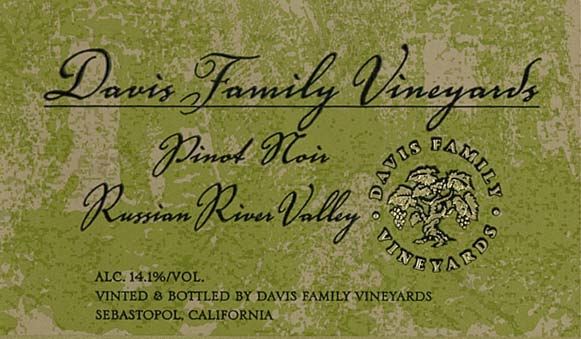 Special note. I received a notice from Annie Rambo on February 22, 2013, that the 2012 vintage wines are being offered for ordering as futures through the second weekend in March with a 25% discount. The 2012 Estate Pinot Noir, Soul Patch, 2012 Starr Ridge, and 2012 Horseshoe Bend Pinot Noir wines are available ( and Estate Chardonnay, Old Vine Zinfandel and Estate Syrah). 6 bottle minimum. E-mail Annie at annie@daviswines.com or call 866-338-9463. You may receive this notice a little late, but contact Annie and tell her the Prince sent you.
Siduri Wines: Variety is the Spice of Life and Pinot NoirAdam and Dianna Novy Lee travel the states of California and Oregon sourcing grapes for their appellation-designated and vineyard-designated Pinot Noirs. When I asked Adam why he takes on the challenge of so many cuvées in each vintage, he told me he likes Pinot Noir from practically everywhere and finds it a joy to make wines from diverse terroirs.
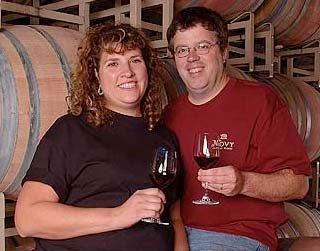 Siduri is a real success story. The Lees arrived in California from Texas and began modestly in 1994 with an initial $24,000 investment and 107 cases of Anderson Valley Pinot Noir. They made that wine together and continue to do so for every wine they produce to this day. They quickly became renown as well as a model for other young Pinot Noir specialists such as Brian Loring (Loring Wine Company) and Andrew Vignello (A.P. Vin). Today, the Lees work out of a modest, utilitarian warehouse facility in Santa Rosa, but it is well equipped and adequately sized for their production (12,000 cases in 2011 and 23,000 cases in 2012). Each wine is vinified separately by block, clone and barrel type, with the end products being harmonious blends that best reflect the sites of origin. Both natural and inoculated ferments are employed. New French oak is kept to 25% or less. The wines are never fined or filtered. The Lees team up with about 27 growers stretching from Oregon’s Willamette Valley to California’s Sta. Rita Hills to establish viticulture regimens that suit them. They purchase all grapes by the acre to maximize quality, reducing yields as necessary to accomplish their goals, and always look to champion the origin of the wines. I spent a thoroughly enjoyable tasting session with Adam at his winery and in between the many hilarious stories he told me, we really did taste some wine. One tale that stood out was related to his close relationship with growers. He gave Gary Franscioni as an example. After Adam obtained an appropriate license, he married Gary at Gary’s request, and did an admirable job even though he was “half in the bag.” Adam has a very admirable positive spin on wine and you cannot help but see his gregarious personality in the Siduri wines. I previously summarized Adam’s thoughts on the 2011 vintage in this issue. Adam had to sell off wine in bulk for the first time in many years and declassified more than the usual number of lots into the appellation Pinot Noirs. The Keefer Ranch bottling, for example, is usually 1,000 cases, but was only 320 cases in this vintage. Only 30% of the Clos Pepe wine made the vineyard-designate bottling. Along with tasting all 16 Pinot Noirs produced at Siduri in 2011 with Adam, I re-tasted the wines at home in my usual fashion a few weeks later. The wines are generally less extracted in this vintage, with refreshing juiciness from bright acidity and easy approachability due to modest tannins. It is not a blockbuster vintage exemplified by husky wines, but rather a vintage of grace and concentration without weight. All wines are bottled under screwcap. Because of this, there is no worry about a corked wine, and I can report that I have never had a noticeable “off” wine from Siduri. The appellation wines were bottled August 2012 and the vineyard-designate wines January 2013. Siduri’s prices remain very reasonable. Drink the appellation wines over a casual dinner at home while your kids are fighting and complaining about homework and your wife is fretting over a stressful day. Drink the Garys’, Soberanes or Pisoni when your out to a special restaurant with your wife and you can spend some time with the wine.
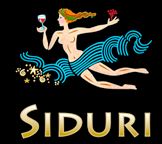 Why buy these wines? If you like variety, there is something for everyone in the Siduri lineup. Vineyard sources are superb, the vineyards are carefully farmed, and close grower relationships pay dividends. Anyone who can pull off vintage 2011 like Adam did, is a Houdini of wine.
2011 Siduri Chehalem Mountains Willamette Valley Pinot Noir 13.1% alc., 613 cases, $29. Grapes were picked at low Brix (20º) in November (first time for Siduri) and luckily heavy rains held off. Severe crop thinning. Only 17% of fruit made the cut for this bottling, mostly from old vines. · A simple but easy drinking wine with shy cherry, sandalwood and espresso aromas, cherry and raspberry flavors, good acidity and very soft tannins. Respectable concentration in an elegant, light weight offering. Decent.
2011 Siduri Sonoma County Pinot Noir 13.1% alc., 1,251 cases, $22. Primarily sourced from Van der Kamp Vineyard on Sonoma Mountain and Castro and Sexton Sonoma Coast vineyards. · Light reddish-purple color in the glass. Aromas of black cherries, new leather and subtle oak. Reasonably concentrated dark red cherry and berry flavors with a hint of cola, oak and savory spice. Light on its feet with an appealing delicacy. Decent.
2011 Siduri Sonoma Coast Pinot Noir 12.9% alc., 1,252 cases, $32. 50% Sonatera Vineyard, 37% Castro Vineyard, 10% Ewald Vineyard and 3% Hirsch Vineyard. A blend of 8 clones from 11 different vineyard blocks picked both before and after the early October rains. · Moderately light reddish-purple color in the glass. Surprisingly concentrated and flavorful considering the very low alcohol (according to Adam, "This is one of the leanest Pinot Noirs at 12.9% alcohol we have ever made, and yet it is rich and concentrated"). Aromas of darker berries, plum and new oak but never really opens up over time in the glass. Moderately rich red fruit flavors are accented by savory herbs and oak. Soft in the mouth with good acidity that adds verve. Good.
2011 Siduri Russian River Valley Pinot Noir 14.3% alc., 2,434 cases, $32. A blend of fruit from five vineyards including 7 clones and 17 blocks, all of which were fermented and aged separately. · Moderately light garnet color in the glass. Quintessential Russian River Valley Pinot with deep, lush cherry cordial aromas and flavors, restrained tannins, good acidity, and a noteworthy cherry cola finish. Good.
2011 Siduri Santa Lucia Highlands Pinot Noir 14.5% alc., 1,333 cases, $32. A blend of fruit from Santa Lucia Highlands vineyards that are sourced by Siduri. · Medium reddish-purple color in the glass. Very shy scent of darker berries and plum with a hint of oak. Never really opens up on the nose. Middleweight flavors of blackberry and black currant with a lacy oak overlay, softly textured with moderately muscular tannins. Decent.
2011 Siduri Sta. Rita Hills Pinot Noir 14.1% alc., 1,014 cases, $32. A blend of fruit from Cargassachi, Clos Pepe and Sebastiano Vineyards. · Moderately light reddish-purple color in the glass. Appealing aromas of black raspberries, forest floor, and tobacco oak. Concentrated flavors of fresh black cherries, dark berries, spice, Hoison sauce and complimentary oak. A solid wine with redeeming balance that will have fans. Good (+).
2011 Siduri Sonatera Vineyard Russian River Valley Pinot Noir 13.2% alc., 307 cases, $32. 5 clones. · Light reddish-purple color in the glass. Nicely perfumed with intense Bing cherry aromas underlain with oak-driven espresso. Dark red cherry and berry fruits accented with baking spice are featured in a richly fruited wine with reasonable mid palate presence, styled with modest tannins and bright acidity, tailing off to a shallow finish with oak highlights. Decent.
2011 Siduri Ewald Vineyard Russian River Valley Pinot Noir 14.9% alc., 149 cases, $48. A 3.1-acre vineyard in the Vine Hill area near Kistler. All fruit goes to Siduri. Clones 115 and 777. · Medium reddish-purple hue in the glass. Aromas of well-ripened cherries, cigar box and eucalyptus. Bright, juicy and crisp with a middleweight core of smoky black cherry and plum fruit, finishing with intensity. Has good concentration yet light on its feet. Still sporting a noticeable oak topcoat. Good.
2011 Siduri Keefer Ranch Vineyard Russian River Valley Pinot Noir 14.2% alc., 320 cases, $52. · A classy wine with a velvety array of red cherry and strawberry fruit accented with baking spices and oak, which last through the generous aromatic finish. The acidity stands out in this wine. Adam likes to point out that the best 2011 wines have concentration without weight and this wine personifies that. My only nit is that there is a green thread running through this wine in the background. Good (+).
2011 Siduri Hirsch Vineyard Fort Ross-Seaview Pinot Noir 12.9% alc. $55. Siduri has purchased Hirsch fruit from the oldest section of the vineyard since 1995. 2011 was the last year for most of the old vineyard due to leaf roll virus. Very small crop, 20% whole cluster. Indigenous yeast fermentations. Only 3 out of 5 barrels made the cut and 2 of the barrels were aged in new French oak. · Light reddish color in the glass. Very reticent nose with extremely shy aromas of cherries and spice. Cherry fruit is featured with a confected gum drop and pastry overlay, but with some unusual, indescribable flavors. Very light with fine tannins peaking out on the finish. Decent.
2011 Siduri Soberanes Vineyard Santa Lucia Highlands Pinot Noir 235 cases, $48. Adjacent Garys’ Vineyard but rows are oriented differently so the winds pass through the vineyard more evenly and because it is more fertile, the vines are planted closer together. Fourth leaf. Pisoni selection, and 667. · Moderately dark reddish-purple color in the glass. Aromas of dark currants, ripe plum and brandied raisins. Delicious and harmonious, with gorgeous flavors of black plum and blackberries with a note of spice and citrus in the background. The fruit really sparkles in this wine and lasts and lasts on the finish that offers a teasing hint of spice and mocha. Spectacular the following day from a previously opened and closed bottle showing an Elvis on velvet mouth feel. A complete wine that is very refined and sophisticated and clearly the jewel of this vintage for Siduri.
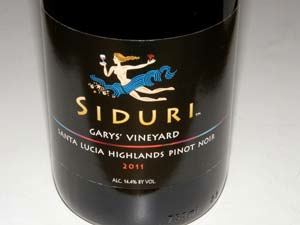 2011 Siduri Garys’ Vineyard Santa Lucia Highlands Pinot Noir 14.4% alc., 419 cases, $52. Grapes picked prior to October rains. Pisoni selection on two rootstocks. Some whole cluster. Aged 14 months prior to bottling. · Moderate reddish-purple color in the glass. The nose explodes upon opening with fresh cherry aroma and hints of spice, herbs and redwood. On the palate, the layers of flashy cherry and raspberry fruit really draw your attention and hold it through a finish like a three hour movie you don’t want to end. Spend some quality time with this one as it will gradually become significantly better in the glass.
2011 Siduri Rosella’s Vineyard Santa Lucia Highlands Pinot Noir 14.1% alc., 613 cases, $52. 38% 777, 27% Pommard, 27% 828 and 8% Pisoni clones. 115 did not make the final wine. Picked at 23.9º to 24.7º Brix. Mix of native and inoculated fermentations. · Medium dark reddish color in the glass. Nicely perfumed with bright aromas of cherry pie glaze, sandalwood and rose petals. Dark red strawberry and cherry flavors are featured in a mid weight style with balanced fine-grain tannins and some welcome finishing intensity. Offers some textural interest as well. Very good.
2011 Siduri Pisoni Vineyard Santa Lucia Highlands Pinot Noir 14.9% alc., 536 cases, $55. · Medium reddish-purple color in the glass. Typical aromas and flavors of Pisoni but more approachable and welcoming in this vintage. The nose offers scents of black currants, black grapes, and blackberries with hints of black licorice, dark chocolate and oak. Delicious, full-bodied core of black fruits including plum and grape with a hint of root beer, clothed in noticeable but relatively restrained tannins, finishing with power. The velvety mouth feel is very seductive. A wine of recognizable breeding, crafted with great skill.
2011 Siduri Sierra Mar Vineyard Santa Lucia Highlands Pinot Noir 14.4% alc., 445 cases, $52. Vineyard planted over several years (2007, 2008, 2010) by Gary Franscioni at the southern end of the Santa Lucia Highlands. Clone 23 (Mariafeld), Pommard and 943 (777 didn’t make the cut). · Deep, dark purple color in the glass. Aromas of spicy black raspberry with tobacco-laced oak in the background. The fruit really emerges with conviction as the wine is swirled in the glass over time. The mid palate infusion of nicely ripened dark red and black cherries and berries with a hint of Hoison sauce, anise, brown spice and oak is quite pleasurable. Soft and smooth on the palate with admirable balance and noticeable finishing presence. Very good.
2011 Siduri Clos Pepe Vineyard Sta. Rita Hills Pinot Noir 14.2% alc., 196 cases, $54. · Only a third of the grapes harvested from this vineyard made it into this wine. Very modest reddish-purple color in the glass. The aromas never show up despite extended swirling in the glass. However, the flavors explode on the palate with intense flavors of black plum, black currant, and exotic brown spice. The fruit really makes an impression and finishes with power and length. Very soft in the mouth with supple tannins. Give this wine some time in the cellar. Very good.
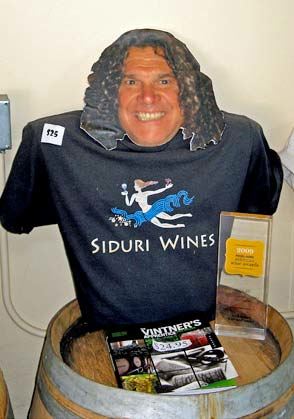
Inman Family Winery: Constantly EvolvingKathleen Inman reminds of the song by Alicia Keys, “The Girl is on Fire.” Her winery is one of the most ecofriendly in the Russian River Valley, she is a proponent of screwcap closures, her sparkling Brut Rosé is one of the finest in all of California, she has began to tweak her Pinot Noir style with the inclusion of significant whole clusters in her ferments, and she now offers a special sit-down tasting by appointment where she offers a tasting of her higher-end offerings as well as library wines and some face time with her.
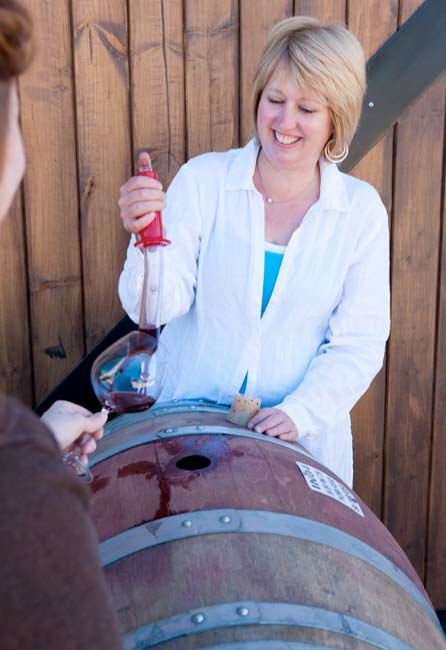 In 1998, Kathleen and Simon Inman left their careers behind in England and arrived in California where she learned winemaking while they looked for a suitable property to grow grapes. The discovered a farm for sale at the junction of Olivet and Piner Roads in the Russian River Valley. The Inmans acquired the property and named it Olivet Grange, after the family’s English country home known as The Grange at Elvington. In 2000, they planted a little over 7 acres of Pinot Noir (Dijon clones) and Pinot Gris on the 10.45-acre property. Kathleen started out modestly with an estate and Russian River Valley blend Pinot Noir, a Rosé and a Pinot Gris. She has since added a Russian River Valley Chardonnay, a Brut Rosé, and a Pinot Noir from Thorn Ridge Vineyard in the Russian River Valley. She plans to produce a Blanc de Noir style sparkling wine soon. When I visited, I tasted two OGV (because of a challenge from Australia’s famous wine label, Grange, the Inmans display OGV instead of Olivet Grange Vineyard on their label) Pinot Noirs. Kathleen used 20% whole cluster in her 2009 vintage OGV Pinot Noir, liked the results, and has pushed whole stem inclusion to 50% in the unreleased 2010 OGV and 2011 OGV (still in barrel) Pinot Noirs. I much preferred the 2010 and 2011 wines over the 2009 vintage wine because the wines displayed more interesting savory and spice notes, more nuance, and more appealing textural qualities. The winery’s tasting room is housed in a tasteful barn set among the property’s vines and is open Thursday through Sunday. As noted, a special private tour and tasting is available with Kathleen by appointment. Visit the website at www.inmanfamilywines.com. Wines are sold primarily through the winery’s wine club and tasting room. A restored farmhouse on the property is available for rent and is ideally located for touring the Russian River Valley. Why buy these wines? Spend some time with Kathleen and you will be caught up in her ambition and focus. Her wines are beautifully crafted with a feminine, charming touch. She is innovative, current and energetic. You can’t help but feel her fire in her wines.

2009 Inman Family “Endless Crush” Nature Sparkling Late Disgorged Russian River Valley Brut Rosé 138 cases, $68. The Inman’s 25th wedding anniversary in 2009 was Kathleen’s impetus to create her first sparkling wine. This Méthode Champenoise version is from the OGV Estate. The wine is a Brut Nature with no sugar added in the final dosage. · Clear coral pink color in the glass. Very dry with appealing aromas and flavors of strawberries and cherries with hints of brioche, roasted huts and yeasty lees. This beauty can hold its own with any fine French Rosé Champagne and is beautifully packaged for celebrations. Exceptional.
2010 Inman Family “Endless Crush” Russian River Valley Rosé $30. Almost sold out (a new release will be offered in April, 2013, with a new label). · Soft red color in the glass. Delightful aromas of fresh-picked strawberries and melon. Bright and crisp, with light flavors of red berries and a subtle herbal note. Very good.
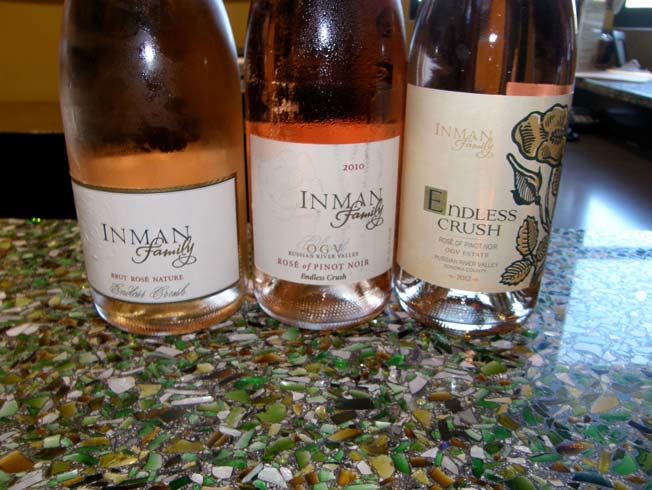
2011 Inman Family Russian River Valley Chardonnay 12.6% alc., $35. 100% malolactic fermentation. · Light straw color in the glass. Tropical, apple and melon fruits accentuate the underlying citrus core of this crisp wine which finishes with a subtle nutty, lemon peel note. A bit austere for my taste, but well crafted. Good.
2009 Inman Family Russian River Valley Pinot Noir 13.7% alc., $35. · Moderately light reddish-purple color in the glass. Fresh aromas of cherries, strawberries and rhubarb. Nicely spiced mid weight cherry core with a lively cut of acidity and very soft, supple tannins. Not terribly complex, but a very solid, highly drinkable wine that is a very good value. Good (+).
2009 Inman Family OGV Russian River Valley Pinot Noir 13.4% alc., $63. Native, relatively cool fermentation, 20% whole cluster (first vintage with whole clusters in the fermenters). Aged 19 months with lees stirring in French oak barrels. · Moderate reddish-purple color in the glass. Well-endowed with aromatic and flavor interest displaying scents of ripe cherry, raspberry and allspice. Soft on the palate with an elegant array of cherry and cranberry fruits accentuated with subtle herbal and spice notes. Some dusty tannins add textural interest and support. Very good.
2009 Inman Family Thorn Ridge Ranch Russian River Valley Pinot Noir 14.5% alc., $63. Farmed by Ted Klopp and his daughter Lauren Klopp William. Pommard, Swan and 777. Native fermentation, 100% destemmed, aged 19 months in 25% new French oak barrels, crossflow filtered and bottled. · Dark reddish-purple color in the glass. Very aromatic with intense dark red berry fruits and spice. Veers to the darker red and black fruit spectrum on the palate in a full-bodied style with underlying notes of savory herbs, tar and black tea. Good.
2010 Inman Family OGV Russian River Valley Pinot Noir 12.5% alc., unreleased. 50% whole cluster. · A striking wine displaying power without weight. Refreshingly fruity with flavors of red cherry and berry, but with an equally appealing savory side of herbs and brown spice. Quite approachable with ripe, fine-grain tannins. Finishes bold and long. Whole cluster brings this wine to a whole other level. Exceptional.
2011 Inman Family OGV Russian River Valley Pinot Noir Barrel sample. 50% whole cluster. · Brief sample was very appealing with bright fruity aromatics, concentrated flavors and dusty tannins. Terrific potential.
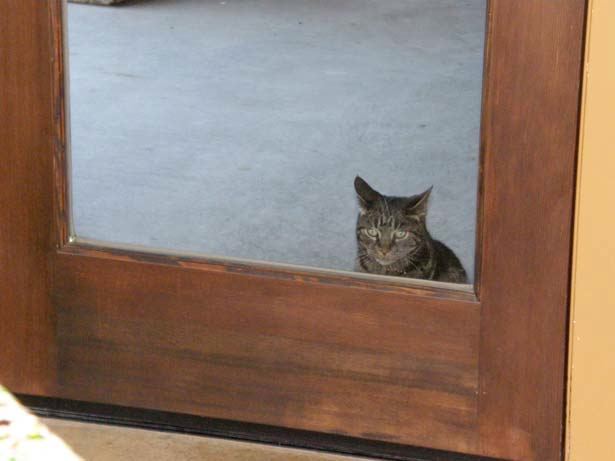
Reuling Vineyard: Established Grower Debuts New Eponymous Pinot NoirThe 14.4-acre Reuling Vineyard in Forestville is familiar with those who are fans of Aubert Wines and Peter Michael Winery. Both wineries have sourced the vineyard’s grapes, and in the case of Aubert, single-vineyard-designated bottlings have been offered. The vineyard was planted in 2000 by owners Tim and Jackie Reuling with the help of Peter Michael Winery. In 2011, the Reulings decided to keep all their own fruit and start their own brand. The first Pinot Noir, 500 cases from the 2011 vintage, and a Rosé from the 2012 vintage will be released in April 2013, and both a Pinot Noir and Chardonnay will be released in 2014. The Reulings plan to produce an elegantly styled Pinot Noir. A preview was offered at this year’s World of Pinot Noir in early March where I met the Reulings. They are very warm people and actively involved in the farming of their vineyard. The Reulings originally planted the vineyard to 12.2 acres of Pinot Noir including three clones: Calera and two different “suitcase” clones from the Vosne-Romanée region of Burgundy. The 2.2-acres of Chardonnay are planted to budwood from the Montrachet vineyard in the Cote de Beaune. Goldridge soils are predominant at this site which is relatively warm but with cooling marine influences. The Reulings enlisted Matthew Taylor, a dynamic winemaker who has quite a resume both in viticulture and winemaking expertise. Matt most recently worked at Araujo Estate Wines where he was both winemaker and vineyard manager. He currently oversees the Biodynamic® Front Porch Farm in Healdsburg where he grows vegetables, manages orchards, produces olive oil and wine. Matt’s passion for Pinot Noir first developed when he worked at Joseph Swan Vineyards and Domaine Dujac. When I visited the Reuling Vineyard on a glorious sunny day in February, I toured the property and spent a delightful time with Matt over a glass of 2011 Reuling Vineyard Pinot Noir. We talked about his reverence for the Joseph Swan property, his dedication to organic and Biodynamic® farming, his preference for whole cluster fermentation and the attributes it brings to wine, and his general winemaking philosophy for the Reuling wines. He has instituted a number of measures in the Rueling vineyard to bring it into balance (the grapes tend to be lower in acidity than in neighboring vineyards, for example), but he considers the vineyard of high caliber with “gorgeous soils.” Very little irrigation is required with only a shot of water usually needed in August to get the grapes to the finish line. A permanent cover crop has been instituted to vitalize the soils. Matt’s winemaking goals include bringing balance to the wines and allowing the vineyard to speak more in the wines while still retaining some richness. The Reuling Vineyard Pinot Noirs will not reflect the bold Aubert wines that were made from the vineyard using extended maceration and 100% new oak. When I left Matt, and later met the Reulings, I was impressed by their approach and commitment. In fact, I was so taken by Matt’s background and goals, and the potential of this project, that I plan to buy some of the Reuling wines myself. I think this is reason enough to consider adding the wines to your cellar. Reuling wines will be sold through a mailing list and sign ups are now accepted on the website at www.reulingvineyard.com.
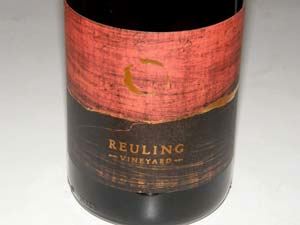 2011 Reuling Sonoma Coast Pinot Noir 14.0% alc., pH 3.78, TA 0.54, <500 cases, $70. 25% whole cluster. Aged 10 months in 40% new Remond French oak barrels. Unfined and unfiltered. · Moderately dark reddish-purple color in the glass. Bright aromas of fresh black cherries, spice and refined oak. Delicious mid weight essence of dark stone fruits with a hint of cola, clove and black raspberry. Gentle tannins and a velvety texture make for easy drink ability. The appealing soft mouth feel is a trade off for lower acidity. Reminds me of a Volnay. Very good.
Castalia: Insider’s Rochioli Pinot NoirI met with Terry Bering, the cellar master at J. Rochioli Vineyards since 1990, and we talked at length about his latest release and winemaking experience at Rochioli. Terry has been crafting Pinot Noir with grapes from Rochioli Vineyard since 1992 under his own label, Castalia, which refers to Apollo’s favorite spring on Mount Parnassus in ancient Greece that bestowed drinkers of the spring gifts of poetry and inspiration.
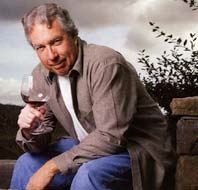 If you like Rochioli fruit, and I don’t know anyone who likes Pinot Noir that doesn’t, and you aren’t a member of the Rochioli mailing list in good standing, you only have a few options: Castalia (from the Rochioli River Block Vineyard and a nearby vineyard adjacent Williams Selyem planted with Rochioli West Block cuttings), Alysian (Gary Farrell’s latest label), or Gary Farrell Vineyards & Winery. There are others who source Rochioli fruit, but they are not permitted to put the Rochioli name on their label so you are on your own with those wines. The 2011 vintage was a lean one at Rochioli. The weather was cold and rainy until June which led to considerable shatter and the harvesting of only half the crop of a normal year. The 2011 Castalia Rochioli Pinot Noir is a shade lighter with less alcohol. Terry calls it, “A classic Pinot Noir that gives you that Pinot High.” His wine is still a little closed in and if he had his choice, he would keep it in bottle for a year before release. He believes his wines hit their stride about a year after bottling (December 2012 for the 2011 vintage). Terry had to put some Rochioli Estate wine in his blend since yields were so low from his usual sources of Rochioli River Block Vineyard and a nearby vineyard on Westside Road. He is not currently using any whole clusters, only whole berries, but says that there are experiments ongoing at Rochioli with four vineyards using some whole cluster. He finds whole cluster gives the Rochioli Pinot Noirs a more candied cherry flavor presumably due to the carbonic maceration. Terry says it will take a few years to decide whether to implement whole cluster in the Rochioli and Castalia wines. The 2012 vintage looks promising and better than either 2010 or 2011 at this stage. 2012 was one of the biggest harvests ever at Rochioli, producing exceedingly high gallons per ton, but it was an orderly and manageable harvest. That said, Terry never judges a vintage too early, saying, “Pinot Noir is just too unpredictable.” He recalls, “I made a Pinot Noir in 2005 in my garage that I absolutely hated for three years. It eventually came out of its funk and is one of my favorite wines that I have ever crafted.” However, it was an orderly harvest making it quite manageable. As a Rochioli insider, Terry can talk at length about the character of the Rochioli fruit. He says that the most desirable flavors and textures do not appear in the wines until the grapes are very ripe. This has required some watering back in certain vintages to avoid high alcohols. When I sat down to taste with Terry, there was a bowl of cherry cordial M & Ms on the table. I didn’t think much about it. In time, Terry told me he discovered that these candies went really well with his Pinot Noir. I tried the match, and surprisingly, he was absolutely correct. Castalia Pinot Noir is sold through a mailing list and the website at www.castaliawines.com. The wine is offered for sale in 6 and 12 bottle lots and in magnum format. Rochioli winery on Westside Road, where Terry crafts his wine, is pictured below. Why buy this wine? Two words: Rochioli fruit.
2011 Castalia Rochioli Vineyard Russian River Valley Pinot Noir 14.5% alc., 300 cases, $55. · Moderate reddish-purple color in the glass. Very bright and spicy cherry aroma which builds in intensity over time in the glass. Ornate cherry flavor with accents of Chinese five-spice, cola, anise and oak, displaying soft tannins, no rough edges, and finishing with a hi-tone cherry presence and juicy acidity. More body and nuance the following day from a previously opened bottle. I would suggest cellaring for a year. Very good.
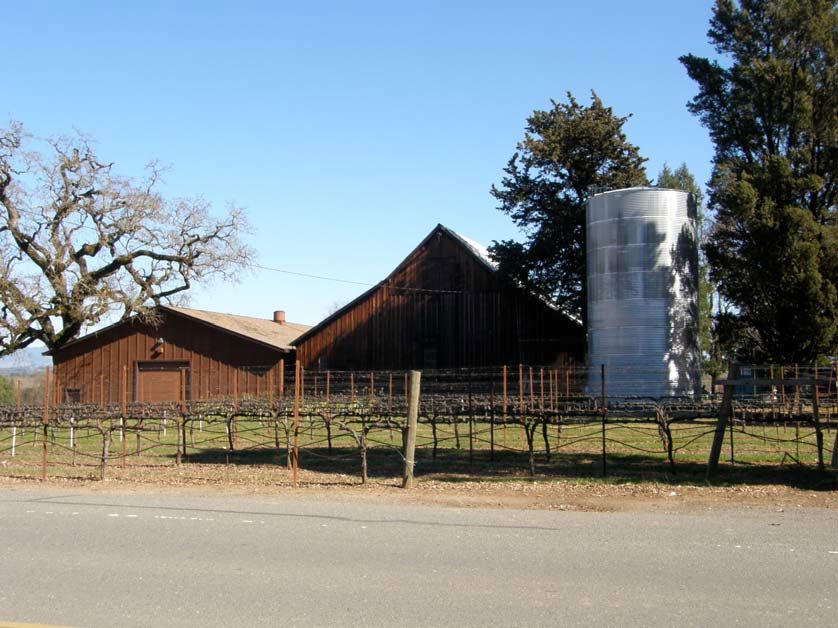
Soliste: A Renowned Chef with Roots in Burgundy Succeeds with WineClaude Koeberle is quite a fascinating study and has been called a “force of nature.” He is opinionated (“Many of California’s fruit-forward wines do not pair well with food”), devoted to Pinot Noir with religious fervor (“Cabernet Sauvignon is an evil weed”), and talkative. He could impress you with his culinary accomplishments (Apprenticed under Paul Bocuse and Alain Chapel, became the youngest 3 Star Michelin Chef in Paris, Chef at Ma Maison and L’Orangerie in Los Angeles, James Beard Award as a master chef, French Laundry partner, and one of the driving forces behind Creative Culinary Concepts, Inc., and K World Cuisine, Inc.), but he would rather talk at length about how he has taken old world (Burgundian) beliefs and applied them to produce wines with finesse and balance that work in harmony with fine cuisine. Together with long time friend and partner, Donald Plumley (photo right), and their respective spouses (Elisabeth and Beth), Claude started Soliste in 2005 with the release of a Sonatera Vineyard Pinot Noir. The name Soliste is derived from the special barrel or “soliste” that Burgundian winemakers reserve for their family and friends. The winemaker is Ryan Zepaltas (Zepaltas Wines and Siduri Wines). A vineyard property in the Sonoma Coast is being negotiated for acquisition, and a new Soliste winery to be built on the property is in the planning stages.
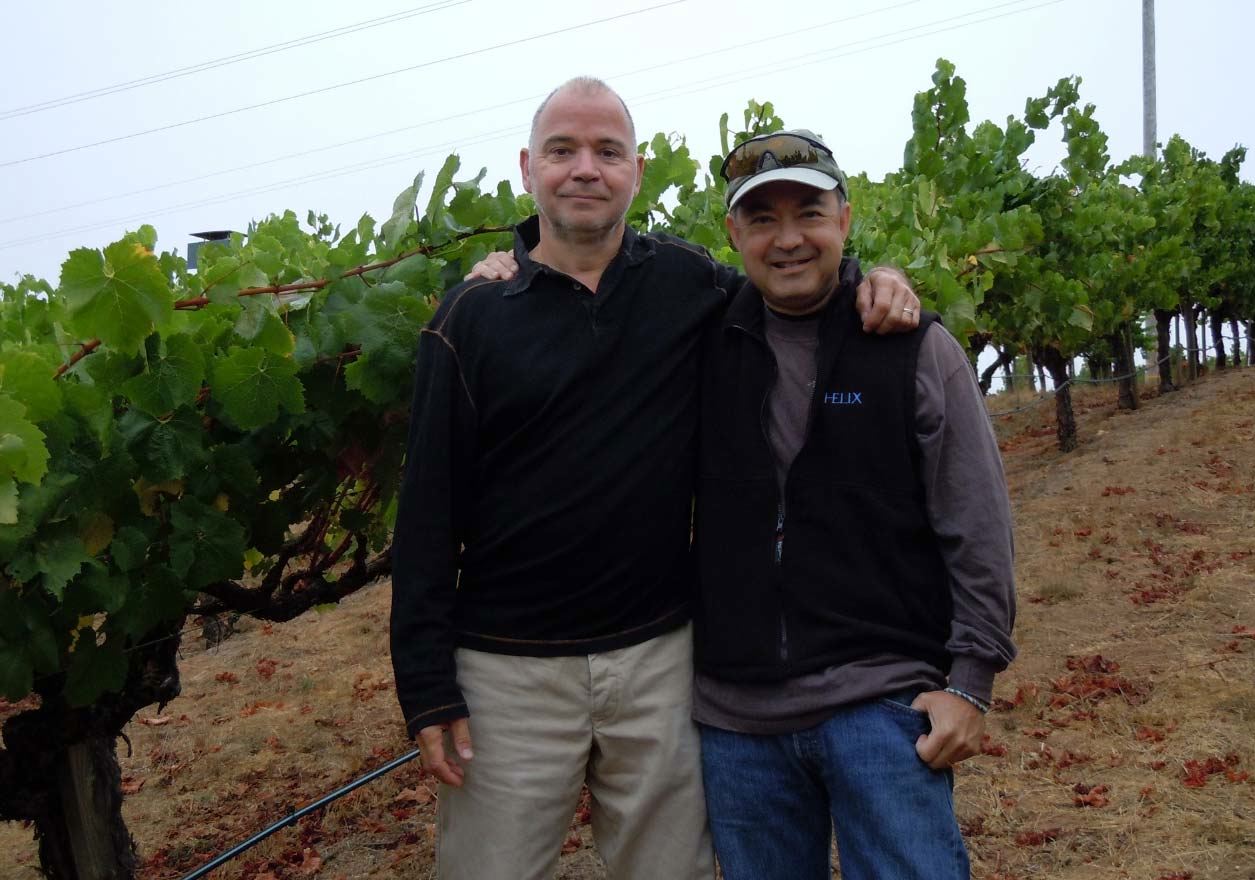 Claude has released four MonoClone® Pinot Noirs from select Sonoma Coast vineyards in the 2010 vintage. He is a believer in Single Vineyard, Single Clone and Single Cooperage wines - what he calls MonoClone® and since 2009, all Pinot Noir releases have reflected this. A single clone, married with a specific site, climate and exposure, and then aged individually in a single cooperage. I had the opportunity to sample all four wines at lunch with Claude recently and came away impressed by his "single minded" devotion to producing “Beaune in the USA.” The wines include L’Ambroisie (clone 828), L‘Esperance (clone 115), Nouveau Mode (Pommard clone) and Forêt (clone 23). Two of the wines I tasted in depth at home are reviewed below. A Sauvignon Blanc and Chardonnay are also offered. The Soliste team manages its vineyards 100% regardless whether they own or lease them. Soliste wines are produced in very small quantities and are allocated through a mailing list. They are also available from fine dining partners. Visit the website at www.soliste.com. Soliste was recently one of the featured wineries at In Pursuit of Balance. Why buy these wines? How many Pinot Noir producers in California were born in Burgundy, are accomplished chefs, and are offering food-friendly wines that reflect a Burgundian sensibility?
2010 Soliste Forêt Sonoma Coast Pinot Noir 14.1% alc., 149 cases, $85. Clone 23 (Mariafeld). Mariafeld clone came to the US from the government agriculture research station in Wädenswil, Switzerland in 1966. Infrequently bottled as a stand-alone clone. From Guidicci Vineyard in Occidental. · Medium reddish-purple color in the glass. Very clean, bright and fresh aromas of black cherries and potpourri. The wine delivers a delicious mouthful of dark berry and black cherry fruit, expanding on the palate with nuance and class, and finishes with a statement. A subtle cola and earthy accent add interest. Juicy, with soft tannins. When tasted a day after opening and re-corked the, wine was still pumping out Pinot goodness.
2010 Soliste L’Ambroisie Sonoma Coast Pinot Noir 12.8% alc., 23 cases, $100 (sold out). Clone 828 from Guidicci Vineyard in Occidental. Tasted a day after opening from a re-corked bottle. · Moderate reddish-purple color in the glass. Red fruits are featured in the nose and on the palate. An acid-driven wine that is more austere than the Soliste Forêt with less ripe fruit flavors including red cherry and cranberry, finishing with a cleansing riff of citrus. A very pretty, elegant wine with gossamer tannins. If the Forêt is akin to a leather jacket, this wine is more like a silk shirt. Very good.
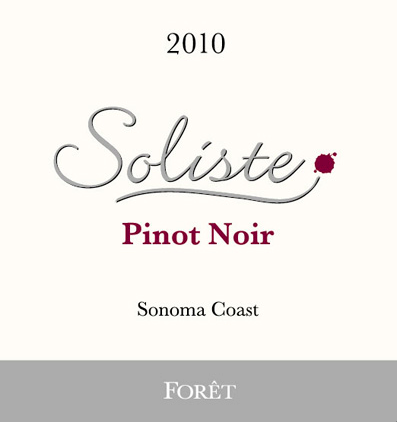
Recent Sips of Pinot NoirAugust West Consistently stellar wines from a partnership between winemaker Ed Kurtzman and winegrowers Gary Franscioni and Howard Graham, showcasing grapes from their Santa Lucia Highlands and Russian River Valley vineyards. 2011 saw a rainy winter followed by a cool spring and summer, with early fall rains. Yields were lower than usual from both SLH and RRV appellations. Ed says, “Despite the difficulties of the vintage, the wines turned out surprisingly well with focused fruit and age worthy structure.” The wines were released in January 2012 and are available from the winery website at www.augustwestwine.com. Feel free to call Ed directly at 415-225-2891 for questions.
2011 August West Rosella’s Vineyard Santa Lucia Highlands Pinot Noir 14.6% alc., pH 3.59, TA 0.68, 382 cases, $45. Clones 113, 667 and Pisoni. Aged 10 months in 50% new, 44% 1-year-old and 6% 2-year-old French oak barrels. · Moderately light reddish color in the glass. Pleasing aromas of cherry pie glaze, spice and sandalwood. Middleweight array of dark red fruits, most prominently strawberries. The most elegant and redfruited of the Santa Lucia Highlands’ wines with modest tannins and a strawberry-infused finish. Not a powerhouse, buy oozes charm. Very good.
2011 August West Graham Family Vineyard Russian River Valley Pinot Noir 14.3% alc., pH 3.79, TA 0.60, 167 cases, $45. Clones 667, 777, 828 and 23. Aged 10 months in 71% new and 29% 1-year-old French oak barrels. · Moderately light reddish-purple color in the glass. Lovely aromas of Bing cherries and smoky oak. Mid weight flavors of cherries, raspberries and baking spices. Nicely balanced and easy to like, finishing with a kick of fresh cherries. Very good.
2011 August West Sierra Mar Vineyard Santa Lucia Highlands Pinot Noir 14.6% alc., pH 3.66, TA 0.63, 129 cases, $45. Swan selection and clone 23. Aged 10 months in 66% new, 17% 1-year-old and 17% 2-yearold French oak barrels. · Moderately dark reddish-purple color in the glass. Shy aromas of black cherry, spice and vanilla. Fairly intense and concentrated dark red berry and cherry fruit with complimentary oak in the background on the mid palate, finishing with some oak-laced, fruit-driven power and a rush of tannins. Tasted the following day from a previously opened and re-corked bottle, the aromatics still had not appeared and the wine still displayed muscular tannins. This wine should benefit from cellaring at least a year. Good.
2011 August West Santa Lucia Highlands Pinot Noir 14.5% alc., ph 3.62, TA 0.66, 406 cases, $32. From Rosella’s, Sierra Mar and Soberanes vineyards. Aged 10 months in 12% new, 59% 1- year-old and 29% 2-year-old French oak barrels. · Medium reddish-purple color in the glass. Aromatically alive with scents of purple grapes and plums with a hint of spice and brioche. Full-bodied flavors of plum and boysenberry with a hint of spice and smoky oak in the background. Juicy and vibrant with firm tannins. A solid appellation wine. Good (+).
2011 August West Russian River Valley Pinot Noir 14.1% alc., pH 3.61, TA 0.64, 215 cases, $32. Clones 667 and 777, Swan and Calera selections. Aged 11 months in 10% new, 40% 1-year-old and 29% 2-year-old French oak barrels. · Medium reddish-purple color in the glass. Aromas of cherry liquor, dark red berries, toasty oak, and tea leaf. Light, elegant and slightly savory, with flavors of cherries, cola, leaf and vanillin oak supported by mild balanced tannins. Tasted twice. Decent.
Byron is located on the site of Uriel Nielson’s first commercial vineyard in Santa Barbara County planted in 1964. Over the years, Byron has found the best farming protocols, clones, rootstocks and trellising for the region and is currently undergoing an extensive replanting of the estate vineyards. Byron produces Chardonnay and Pinot Noir from estate and other notable vineyards throughout the Santa Maria Valley. Visit www.byronwines.com.
2011 Byron Santa Maria Valley Pinot Noir 13.5% alc., pH 3.74, TA 0.50, 15, 207 cases, $29. 100% estate-owned Nielson Vineyard fruit. This wine comes from both older Pinot Noir vines planted on their own rootstock and new vines planted to high density spacing with the latest clones and rootstocks. Aged 10 months in 20% new French oak barrels. · Moderately dark reddish-purple color in the glass. Very appealing aromas of black raspberries, black plums, spice, pine and nut-scented oak. Mid weight flavors of dark berries, cherries and plums with pleasing hints of cola, spice and herbal oak. A little earthy tone fills the background. This wine is noticeably lighter, fresher and crisper in this vintage. Good.
Campesino Cellars Griselda Montoya grew up in the Carneros region of Napa and spent her childhood at Papi y Chula Vineyard which is owned and farmed by the Ceja family. Her brothers and their spouses founded Ceja Vineyards and together with Macario Montoya, she started Campensino Cellars. Campensino translates in English as “fieldworker.” The Campesino Cellars wines are a homage to all campesinos. “A mis carnales y mis carnala gracias por su trabajo”: “To my brothers and sisters thank you for your work.” The Papi y Chula Vineyard is farmed by Griselda’s brother, Armando Ceja. Located about a mile north of San Pablo Bay, this 5- acre vineyard is exposed to cooling winds during the day and fog at night. The vineyard’s shallow clay-loam soil produces a low vigor vine, resulting in low yields. Visit www.campesinocellars.com.
2010 Campesino Papi y Chula Vineyard Los Carneros Napa Valley Pinot Noir 14.2% alc., pH 3.68, TA 0.65, 56 cases, $38. Aged 18 months in 100% second fill French oak barrels. · Medium reddish-purple hue in the glass. Enticing aromas of cherries, oak, hazelnut, chocolate and rose petals. Very flavorful mid weight core of cherries, brambly raspberries and black plum with an earthy and subtle oak undertone. Easy to drink with supple tannins, and a refreshingly crisp and teasing finish. Gets better over time in the glass and even better the following day from a previously opened and re-corked bottle. Very good.
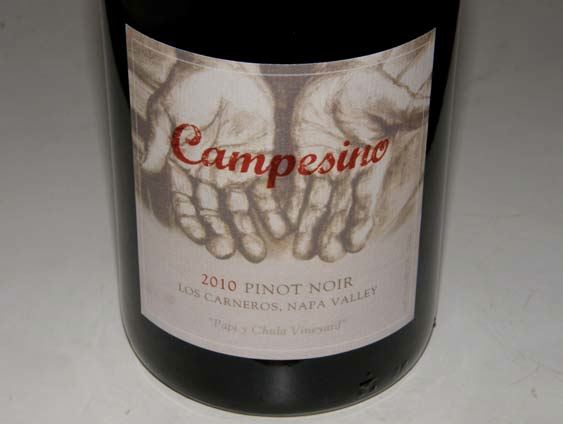
2009 Paraiso Santa Lucia Highlands Pinot Noir 14.2% alc., 14,672 cases, $25, screwcap. Double Gold Medal at San Francisco Chronicle Wine Competition. Third generation growing family with first vines planted in 1973. First winery in region to receive SIP™ Certified Sustainable in 2008. A blend of six clones from estate vineyard. 70% fermented in 5-ton open top fermenters with the balance in 10-ton tanks. Aged 11 months in French oak barrels. · Moderately light reddishpurple color in the glass. Scent of cherries, raspberries, brown spice and maple syrup. Tasteful in an elegant style, featuring cherry and strawberry flavors with a hint of baking spices and oak. Juicy, with soft tannins. A satisfying drink that was even better the following day from a previously opened and re-corked bottle. Very good, especially at this modest price.
ROAR is a partnership between Gary and Rosella Franscioni, owners of the Garys’ (with Gary Pisoni) and Rosella’s vineyards. The name “ROAR” is derived from the sound of the ocean winds that are characteristic in the Santa Lucia Highlands winegrowing region. In 2007 and 2008, Gary planted Sierra Mar Vineyard, located six miles south of Garys’ Vineyard and the Soberanes Vineyard, just south of Garys’ Vineyard which he is developing in partnership with the Pisoni family. Roar was launched in 2001 with the goal of producing small lots of Chardonnay, Pinot Noir and Syrah from Rosella’s, Sierra Mar, Soberanes, Garys’ and Pisoni vineyards. The winemaker is Ed Kurtzman. The two wines reviewed below are already sold out at the winery. The next release of 2011 ROAR wines will be July 2013. Join the mailing list at www.roarwines.com.

2011 ROAR Santa Lucia Highlands Pinot Noir 14.9% alc., pH 3.73, TA 0.54, 1,158 cases, $40. Pisoni, Swan and Pommard clones harvested at 26.5º Brix. Aged 11 months in 46% new and 54% 1-year-old French oak barrels. Unfined and unfiltered. · Moderate reddish-purple color in the glass. Nicely perfumed with bright aromas of dark berry jam, plum pudding and fresh brioche. Tasty essence of dark stone and berry fruits with good concentration and a reasonably full, satiny finish. A solid, impressive appellation wine. Very good.
2011 ROAR Garys’ Vineyard Santa Lucia Highlands Pinot Noir 14.9% alc., pH 3.62, TA 0.58, 641 cases, $52. Pisoni clone harvested at 26.8º Brix.. Aged 11 months in 77% new and 23% 1-year-old French oak barrels. Unfined and unfiltered. · Moderate reddish-purple color in the glass. Welcoming aromas of red and black berry cobbler, black cherries and clove. Delicious core of dark red fruits with a slight savory accent. Full-bodied with a seductively soft texture and very fine tannins. Beautiful integration of oak. A little big and high in alcohol for me personally, but this is a great wine in its style. Garys’ Vineyard seemed to perform beautifully in this vintage.
Sinor-LaVallee was founded by the husband and wife team of winemaker Mike Sinor and Cheri LaVallee Sinor in Arroyo Grande in 1997. Mike started his career at Corbett Canyon Winery and then became assistant winemaker under noted Central Coast vintner Ken Brown at Byron. He left after the 2000 harvest to become winemaker at Domaine Alfred Winery in San Luis Obispo at the site of Chamisal Vineyard. It was here that he met his stride and received considerable notoriety, directing vineyard operations, instituting biodynamic farming, and crafting wines that brought the winery considerable national acclaim, particular for Pinot Noir. In 2006, Mike left Domaine Alfred (now Chamisal Vineyards) to focus on Ancient Peak Winery and the Sinor- LaVallee label. Mike is one of the founding members of the World of Pinot Noir and has often served on the board of that event. He crafts small lots of Pinot Noir and Syrah under the Sinor-LaVallee label from vineyards that are within a bicycle ride from his home in Arroyo Grande. The label features Mike’s thumbprint on the left and Cheri’s on the right with the kids’ thumbprints on the back label. Visit www.sinorlavallee.com.
2011 Sinor-LaVallee San Luis Obispo County Pinot Noir 14.5% alc., 135 cases, $30. A blend of fruit from Talley-Rincon Vineyard in Arroyo Grande and Squire Canyon Vineyard in Avila Beach. Average yields 2.8 tons per acre. 25% whole cluster. Native and natural fermentation, pressed off with a basket press. Aged 12 months in 50% new Francois Frères French oak barrels. Unfined and unfiltered. · Moderately dark reddish-purple color in the glass. The aromas have not arrived in this wine yet, but with swirling, delicate scents of very ripe stone and berry fruit emerge with a pleasant oak backing. The mid palate attack of strawberry, raspberry and plum fruit flavors are moderately intense. The tannins are well managed and the wine finishes with modest but pleasing length. Good.
2011 Sinor-LaVallee Talley-Rincon Vineyard Arroyo Grande Valley Pinot Noir 14.5% alc., 93 cases, $40. Seventh vintage from this block. Yield 2.23 tons from one acre. 100% de-stemmed. Inoculated and native fermentation. Aged 17 months in 50% new Francois Frères French oak barrels. Unfiltered. · Moderately dark reddish-purple color in the glass. Aromas of black cherries, black plum sauce, flint stone and forest floor. A savory wine with layers of intense flavor and finishing power, featuring ripe dark red and purple fruits. Very open and inviting with good structural bones and a bold demeanor. Very good.
2011 Sinor-LaVallee Aubaine Vineyard San Luis Obispo County Pinot Noir 14.5% alc., 143 cases, $40. This 12-acre vineyard is south of Laetitia Winery on the eastern side of Highway 101. Primarily 667 with a small amount of 777. 33% whole cluster. 50/50 inoculated and native fermentation. Aged 17 months in 50% new Francois Frères French oak barrels. Unfiltered. · Dark purple color in the glass. Scent of loganberry jam, raw beef, and roasted plum. Deep plum flavor with a subtle sidecar of spice, dark chocolate and citrus. Very seductive velvety mouth feel with a robust, long, long finish. Beautiful integration of oak. This wine can be a ball buster, but it is a chiseled ballerina in this vintage that is oozing charm. Always a terroir-driven wine of distinction.
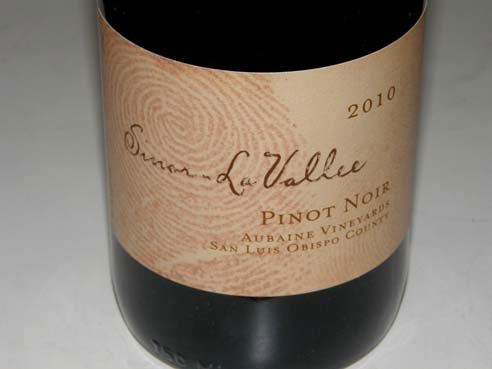
2009 Waterstone Carneros Pinot Noir 14.4% alc., pH 3.63, TA 0.59, 1,241 cases, $22. A blend of several clones from mature vines. 100% de-stemmed, whole berry fermented in open top fermenters, aged 14 months in 35% new and 65% used French oak barrels. Gently fined and filtered. Winemaker Philip Zorn. · Moderately light reddish-purple color in the glass. Appealing array of aromas quite accessible upon opening including dusty plum, cherry and strawberry with a hint of rhubarb. Light and elegant in style, featuring dark red and purple fruits graced by gentle tannins and accented with a spicy tone. An easy drinking, food-friendly wine. Good.
Zepaltas Wines is the eponymous label of Ryan Zepaltas, a young winemaker who assists at Siduri Wines and started his own label with the 2005 vintage. He originally planned a career in skateboarding and moved to Sebastopol to live with relatives and explore opportunities in the San Francisco Bay area. He soon made friends with people in the wine industry including Mike Mendenhall, who was the cellar master at the time at La Crema and he offered him a job. Ryan gradually took to winemaking and went to New Zealand to work a harvest. Upon returning to California he found a harvest position at Siduri and has been there ever since. Most recently he has been crafting the wines for Soliste as well. For more information and to order wines, visit www.zepaltaswines.com. The 2011 wines will appeal to fans of lower alcohol, elegantly-styled Pinot Noir.

2011 Zepaltas Sonoma Coast Pinot Noir 13.2% alc., pH 3.59, TA 0.60, 219 cases, $31. A blend of fruit from four vineyards. Aged 14 months in 33% new French oak barrels. · Moderately light reddish-purple color in the glass. Aromas of cherries, red berries, and spice with a slight pungent note. Light and delicate with soft tannins, featuring cherry, red raspberry and strawberry flavors with a flowery note in the background. Decent.
2011 Zepaltas Nunes Vineyard Russian River Valley Pinot Noir 13.8% alc., pH 3.65, TA 0.60, 48 cases, $42. Clones 777 and 115. Aged 14 months in 40% new French oak barrels. Unfined and unfiltered. · Moderate reddish-purple color in the glass. A melange of aromas including dusty dark cherries, blueberries, rose petal, cocoa and a hint of straw. An elegant, easy drinking wine with the tasty essence of fresh cherries with a touch of spice and oak. Light in weight, with gossamer tannins, and a kiss of cherry on the finish. Good.
2011 Zepaltas La Cruz Vineyard Sonoma Coast Pinot Noir 13.5% alc., pH 3.60, TA 0.60, 98 cases, $42. Seventh vintage from this vineyard. 115, Pommard and 114 clones. Aged 14 months in 33% new French oak barrels. Unfined and unfiltered. · Light reddish-purple color in the glass. The nose is expressive, offering aromas of dark berries, plum, cooked cherries and a hint of fecundity. Light in weight with an elegant demeanor, offering flavors of red raspberries and strawberries with a pleasing savory riff. A charming wine with a delicate finish. Good (+).
Pinot BriefsWinemaker Ehren Jordan Leaves Turley At this year’s WOPN, I learned that Turley Wine Cellars winemaker, Ehren Jordan, had left after eighteen years to concentrate on his highly successful personal label, Failla. Failla was started in 1998 by Ehren and his spouse Anne-Marie Failla, specializing in cool-climate, North Coast Chardonnay, Pinot Noir and Syrah. Ehren was a featured panelist at this year’s In Pursuit of Balance and a lengthy interview with him was conducted at this event by Eric Anderson and myself for Grape Radio (look for posting soon at graperadio.com).
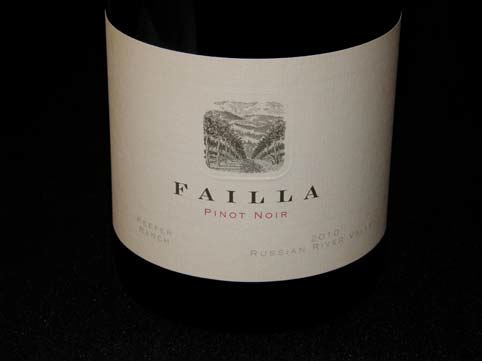 New Oregon and California Pinot Noir Projects According to Wine Spectator (March 12, 2013), Mark Tarlov, who started Evening Land Vineyards in 2005 and left in January 2012, has launched a new Willamette Valley label, Chapter 24, which produced 4,200 cases of Pinot Noir from the 2012 harvest. The consulting winemaker will be Burgundian Louis-Michel Liger-Belair, working with winemaker Mike D. Etzel, the son of Beaux Frères winemaker Michael Etzel. Chapter 24 has also developed a marketing partnership with Patricia Green Cellars and the two wineries will have a joint project, Two Messengers, which in 2011 will consist of a barrel selection of Patricia Green Cellars Pinot Noir. Chapter 24 has a number of notable vineyard sources, including the Patricia Green Estate, Hyland Estates, Shea Vineyard, Lachini Vineyard and Nysa Vineyard. Tarlov plans to set up his own winemaking facility soon and is planning to purchase one or two vineyards in the Willamette Valley. In 2012, Evening Land sold its four Sta. Rita Hills vineyards, a total of 40 acres, to winemaker Sashi Moorman, sommelier Rajat Parr and their business partners who plant to launch their own estate label, Domaine de la Côte, this year. The site is very marginal and the resulting wines will have lower alcohols and be vinified with whole cluster and indigenous yeast. Jackson Family Wines Entering Oregon The Wine Spectator (March 13, 2013) reported that Jackson Family Wines is negotiating to buy three vineyards in the Willamette Valley as part of a plan to increase the offerings of the La Crema label. Winemaker Joe Dobbes will be the winemaker for the 2012 vintage for La Crema Willamette Valley Pinot Noir. La Crema currently produces 900,000 cases of wine annually. The vineyard acquisitions are part of CalPERS Oregon properties. This will definitely raise the profile of the Willamette Valley, although it remains to be seen if this turns out to be good or bad for Oregon’s Pinot Noir reputation. Napa and Sonoma All Stars Tasting The respected wine retailer in Los Angeles, Wally’s, is holding an All Stars tasting under the Big Top at Wally’s on Sunday, April 21 from 1-4 PM. Nearly 100 wineries will be pouring including Pinot Noir notables Belle Gloss, DuMOL, Flowers, Fort Ross, Hartford Court, Hirsch Vineyards, Merry Edwards, Patz & Hall, Paul Hobbs, Robert Sinskey, Walter Hansel, and more. All Stars event special pricing on wines will be extended to attendees. Visit www.wallywine.com for tickets. Williams Selyem Shatters Auction Record A 9-Liter bottle of Williams Selyem Westside Road Neighbors Pinot Noir won the Houston Livestock Show and Rodeo™ Reserve Grand Champion and Best of Show award. A 9-Liter bottle of the winning wine was auctioned at the Champion Wine Auction and Dinner on March 2, 2013, and sold for a record $205,000! The proceeds go to youth programs in Texas. Pruning Video This time of year there is pruning going on in many California vineyards. Check out this good video from Kerith Overstreet at Bruliam Wines, seen pruning with a crew at her Torrey Hill Estate Vineyard in the Russian River Valley. Visit www.vimeo.com/61071625. Vintage Wine Weekend at Four Seasons Resort Maui A three day wine and culinary event on May 24-26, 2013, that will feature vintners Gary Burke of Costa de Oro, Steve Clifton of Brewer-Clifton, Donald Patz of Patz & Hall, and Dan Kosta of Kosta Browne. The weekend starts with a special dinner at which guests are asked to bring a favorite magnum. The second night offers three wine-paired dinners. The third night offers an Oceanfront Gala featuring local foods and 40 exclusive wines. To reserve, contact concierge.maui@fourseasons.com or call 1-808-874-2201. Second Annual Oregon Chardonnay Symposium This event will be held May 4, 2013, at Red Ridge Farms and will feature a new wave of smaller producers who have set out to define their signature style of Willamette Valley Chardonnay. The event will begin with an educational and interactive panel discussion, featuring eight artisan producers and nationally renowned wine writers. The discussion will include a technical tasting of very limited production Chardonnays. The moderator is Katherine Cole, wine columnist for The Oregonian, and the panelists are Paul Gregutt, wine columnist for The Seattle Times and NW editor of Wine Enthusiast Magazine, and W. Blake Gray, author of the Gray Report blog. Participating wineries are Arterberry Maresh, Big Table Farm, Crowley, Division Winemaking Company, Durant Vineyards, EIEIO, Matello and Walter Scott. A walk-around tasting at Durant Vineyards Tasting Room will follow the panel discussion. Sixty tickets available ($60). Call Red Ridge Farms at 503-864-8502. Hedges Family Estate “Rules for Attending a Wine Festival” I received this in a recent email from Hedges Family Estate in Red Mountain, Washington, and it made me laugh out loud.
Don’t tether your wine glass to your neck
I added a few of my own:
Don’t grab a bottle and help yourself.
Outstanding in the Field 2013 Tour Details The 2013 North American schedule for farm dinners is now posted on the website at www.outstandinginthefield.com. Tickets go on sale March 20, the first day of spring. This year there are dinners at Scribe Winery in Sonoma Carneros and Robert Sinskey Vineyards in Napa as well as Pinot Noir grower Devil’s Gulch Ranch in Marin County.
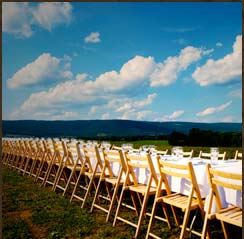 Gallo Releases 5.5% White Wine There has been interest in low-alcohol wines in the UK and Europe and that popularity has begun to spread to the US. Gallo has released a “Summer White” with 5.5% alcohol which is a blend of Chenin Blanc, Colombard, Moscato and Riesling. According to The Drinks Business, this wine is a sister wine to Gallo Summer Red which launched in the UK in 2011. The type of dealcoholization process used was not specified. Reportedly, the wine tastes of “ripe apple, pear and citrus with subtle floral notes.” Gallo also offers a 9% Barefoot Pink Moscato. Conservation Fund Buys Preservation Ranch in Northwestern Sonoma County The Press Democrat (February 26, 2013) reported that a conservation group has bought 20,000 acres of timberland near Annapolis that was scheduled for 1,769 acres of commercial vineyard development by CalPERS, the California workers pension fund. The Cal PERS project had been hotly contested by environmentalists. Mediterranean Diet Study Significant Spanish researchers reported a study in the New England Journal of Medicine (Estruch, R., et al., “Primary prevention of cardiovascular disease with a Mediterranean diet.”) recently that found among persons of high cardiovascular risk, a Mediterranean diet (Med-Diet) supplemented with extra-virgin olive oil or nuts reduced the incidence of major cardiovascular events. 7,447 subjects were followed for several years. Two versions of the Med-Diet (one with large amounts of extra-virgin olive oil and one with a supplement of mixed nuts) were compared to a control group of subjects who followed a low-fat, low-cholesterol diet. The first two groups who followed a Med-Diet were found to have a 30% less rate of heart attack, stroke and death due to cardiovascular disease. Many nutrition experts touted the findings. A large majority of the subjects consumed wine at baseline, some consuming 7 or more glasses of wine a week during the trial. Alcohol consumption was not evaluated specifically for its effects. The International Scientific Forum on Alcohol Research reviewed the study. They concluded the following. “The striking reduction in risk shown in the study from the Med-Diet provide further evidence of the effectiveness of such a diet in reducing cardiovascular disease. A very large amount of scientific data now support advice to follow a Mediterranean-type diet that does not restrict calories, but encourages the intake of selected fats (which may include extra-virgin olive oil or canola oil), as well as more fruits, vegetables, grains, nuts and wine. It may be the most effective approach for reducing cardiovascular disease.” Helicopter Rides Over Vineyards an Exhilarating Experience in Sonoma County Wines & Vines (February 20, 2013) reported that helicopters have been used for some time for surveying vineyards. I have noticed an increasing number of aerial shots of vineyards on winery websites. Helicopters can also be used for frost control, mildew control and the application of pesticides and cover crop seeds. Unmanned drone mini-helicopters may be employed in the future. Besides these commercial applications, helicopters are being used for wine tourists to view the topography of Sonoma County. Sonoma Helicopters at Charles M. Schultz Airport in Santa Rosa offers a package of wine tasting and a helicopter tour above the Dry Creek, Alexander and Russian River Valleys. Clos Du Bois and Mazzocco Sonoma have offered deals with Sonoma Helicopters. The most popular charter is a 1-hour flight for three people over the Russian River out to the Jenner coast ($600). Visit www.sonomahelicopter.com. Summer Alaska Wine Cruise Handley Cellars and Greenwood Ridge Vineyards will be pouring aboard a Celebrity ship on this cruise. Seven nights from August 16-23, 2013. Set sail from Seattle for visits to the ports of Ketchikan, Tracy Arm Fjord, Juneau, Inside Passage, Skagway and Victoria. Wine tasting seminars, wine pairing luncheon, Champagne galley tour. Special offer if you book between March 15 - April 15. For information contact Marie Lewis at 800-301-9673 ext 543. Sponsored by Touring & Tasting, The Premier Guide to Wine Country. Pinot Noir 2013 Video Wine journalist Jamie Goode posted a video on his website (www.wineanorak.com) about the Pinot Noir 2013 conference recently held in Wellington, New Zealand. Go to www.wineanorak.com/wineblog/videos/pinot-noir-2013-video-and-some-thoughts-in-retrospect. Patz & Hall 25th Anniversary Video Who says wine is too serious? A video on wine that won’t put you to sleep! Cameos from people like Gary Pisoni. Best six minutes you can spend. Visit http://youtu.be/FAPDG2JYQzA.
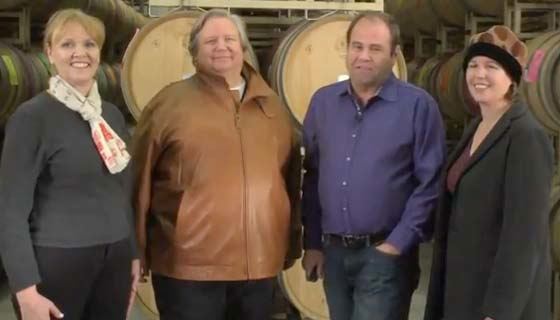 German Pinot Noir Receiving Recognition There have been a number of articles in the press recently on German Pinot Noir. German wine expert Stuart Pigott says, “A new generation of winemakers and wine drinkers take serious indigenous Pinot Noir wines for granted. But the world is still catching up on this development....these wines often hold their own in aroma, concentration and harmony.” One of the problems is that really good German Pinot Noir rarely leaves the country so there is low visibility in international markets. At a recent spring auction of the “Hessische Staatsweingüter Kloster Eberbach,” a 1953 Assmannshäuser Höllenberg Spätburgunder fetched $3,300. The Kloster Eberbach domain has a library of Spätburgunder dating back to 1882. The price for this wine reflects the admiration for German Spätburgunder. Oregon Passes Wine Growler Bill House Bill 2443, which was discussed in the last issue, allows wine to be sold in large, customer-supplied containers. It was passed in March by the House and will likely pass the Oregon Senate as well. Wine and cider would be available in 2 gallon jugs that can be washed and reused and will assist wineries who want to sell their wine in kegs. Emeritus Hosts End of Frost Party Emeritus Vineyards is a small, estate vineyard and winery producing Russian River Valley Pinot Noir. Emeritus farms over 180 acres of Pinot Noir across three vineyards. The party will be held at Emeritus’ home, Hallberg Ranch on Highway 128. For the first time, Emeritus is opening up their Annual End of Frost Party to everyone. President Brice Cutrer Jones will lead the festivities including vineyard tours with Vineyard Manager Kirk Locca, barrel tastings with winemaker Nicolas Cantacuzene, along with new releases, live music and food. Tickets are $40 per person and available from the Emeritus Vineyards website at www.emeritusvineyards.com/events or at the door. 16th Annual Anderson Valley Pinot Noir FestivalGet your tickets now because this event sells out every year by April 1. The dates are May 19-20, 2013. Technical conference Friday, BBQ Friday night at Scharffenberger Cellars, Grand Tasting from more than 40 producers on Saturday, winemaker dinners at Apple Farm, Little River Inn, Roederer Estate, and Aquarelle Saturday night. Visit www.avwines.com for details and tickets.
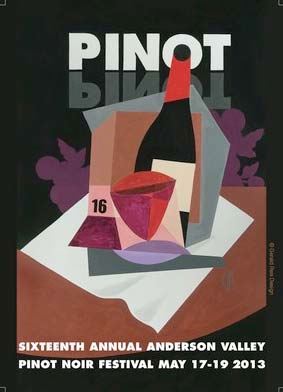
The California Directory of Fine Wineries Central Coast Edition
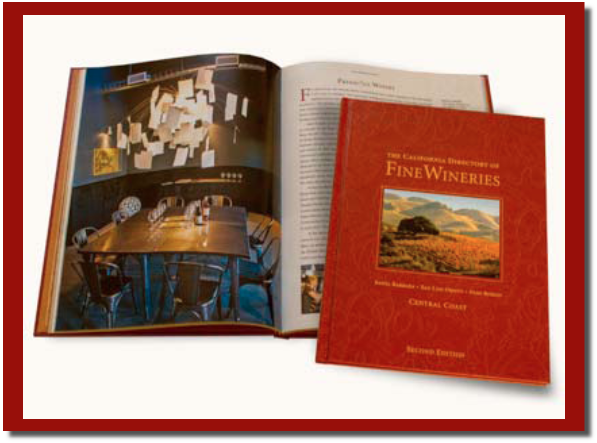 This hard bound, beautifully illustrated book hits all the high notes for those interested in wineries of the Central Coast regions of Santa Barbara County and San Luis Obispo County. It is not an all-inclusive guide, but a selection of prominent wineries that are among the best California has to offer. Many of the wineries chosen among the fifty featured are those with picturesque winery facilities and tasting rooms, beautifully photographed by noted travel and wine country photographer, Robert Holmes. The authors give a detailed history of each winery and extensive valuable information including location, hours, tours, varietals produced and specialty varietals offered, winemaker, and other special features of each winery. No wine reviews are offered or judgments extended concerning wine quality, just inviting, succinct and colorful vignettes of each winery. Maps are included for those inclined to bring this reference along on their wine touring escapades. For those who want to hone in on one or several varietals, there is a comprehensive listing of the varietals produced by each of the included wineries, a valuable summary that is difficult to find from any other source. If you are a Pinot Noir lover, you will find wineries such as Alma Rosa Winery & Vineyards, Cambria Estate Winery, Carr Vineyards & Winery, Chamisal Vineyards, Laetitia Vineyard & Winery, and Presqu’ile Winery described inside the Directory. If you have ever longed to visit the wine country in the Central Coast of California, this book will provide the impetus to find a babysitter, pack some comfortable, casual clothes and sunscreen, jump in the car, and head out for a joyous road trip. Be sure to have this handy guide by your side. The California Directory of Fine Wineries Central Coast Second Edition, K. Reka Badger and Cheryl Crabtree, writers, Tom Silberklett, editor and publisher, Wine House Press, 2013, 144 pp. $13.57. Available at Amazon.com. |